






Remember when…
Think about the things you loved to do that are dif cult today — going for a walk or just sitting comfortably while reading a book. And remember the last time you got a great night’s sleep?
As we get older, health issues or even everyday aches, pains and stress can prevent us from enjoying life.
So what’s keeping you from having a better quality of life?
Check all the conditions that apply to you.
Then read on to learn how a Safe Step Walk-In Tub can help. Feel better, sleep better, live better
A Safe Step Walk-In Tub lets you indulge in a warm, relaxing bath that can help relieve life’s aches, pains and worries.











A Safe Step Tub can help increase mobility, boost energy and improve sleep.

It’s got everything you should look for in a walk-in tub:
• Heated Seat – Providing soothing warmth from start to nish.
• MicroSoothe® Air Therapy System – helps oxygenate and soften skin while offering therapeutic bene ts.
• Pain-relieving therapy – Hydro massage jets target sore muscles and joints.
• Safety features – Low step-in, grab bars and more can help you bathe safely and maintain your independence.
• Free Shower Package – shower while seated or standing.



Volume Number
2024 55 5
ELECTRIC ASSOCIATION.
COMMUNICATIONS STAFF
Cassi Gloe, CCC, Publisher | cgloe@coloradocountrylife.org
Kylee Coleman, Editor | kcoleman@coloradocountrylife.org
Melinda Taylor, Administrative Assistant | mtaylor@coloradocountrylife.org
ADVERTISING
advertising@coloradocountrylife.org | 720-407-0712
National Advertising Representative: American MainStreet Publications, 611 S. Congress Street, Suite 504, Austin, TX 78704 | 800-626-1181
Advertising Standards: Publication of an advertisement in Colorado Country Life does not imply endorsement by any Colorado rural electric cooperative or the Colorado Rural Electric Association.
Colorado Country Life (USPS 469-400/ISSN 1090-2503) is published monthly by Colorado Rural Electric Association, 5400 Washington Street, Denver, CO 80216-1731. Periodical postage paid at Denver, Colorado. ©Copyright 2024, Colorado Rural Electric Association. Call for reprint rights.
EDITORIAL
Denver Corporate Office: 5400 Washington Street, Denver, CO 80216 info@coloradocountrylife.org | 303-455-4111
Editorial opinions published in Colorado Country Life magazine shall pertain to issues affecting rural electric cooperatives, rural communities, and citizens. The opinion of CREA is not necessarily that of any particular cooperative or individual.
SUBSCRIBERS
Report change of address to your local cooperative. Do not send change of address to Colorado Country Life. Cost of subscription for members of participating electric cooperatives is 30 cents per month, paid from equity accruing to the member. For nonmembers, a subscription is $15 per year in-state/$20 out-of-state.
POSTMASTER
Send address changes to:
Colorado Country Life 5400 Washington Street, Denver, CO 80216

Facebook.com /COCountryLife
Instagram.com /cocountrylife
Pinterest.com /COCountryLife
YouTube.com /COCountryLife1
www.coloradocountrylife.coop
Anyone new to working in the electric co-op world quickly learns that all cooperatives weave seven principles into the way they do business. I have previously written about a few of these in this space, and this month I’m highlighting an important one: cooperation among cooperatives.
In April, I had two opportunities to see this cooperative principle in action.
More than 100 people from across the United States met in Hood River, Oregon, to learn and share best practices. I learned writing and photography tips alongside co-op communicators and marketing professionals. One week later, I traveled to Pueblo West to connect with Colorado electric co-op communicators from places including Buena Vista, Gunnison, and Falcon.
Both conferences provided an opportunity to share successes and learn new tools for our work. And more importantly, it facilitated time for fellowship and personal, face-to-face connection with a group of talented individuals.


There’s a phrase that pops up each time we all get together: “Admire and acquire.” We see the innovative ways others are communicating with their co-op members, and we happily share solutions for campaigns, infographics, articles, or projects. This is a prime example of cooperation among cooperatives. We don’t treat creative ideas as proprietary information. Instead, we understand and value that we are all working together for the larger mission of sharing the electric co-op story. This cooperative principle expands our collective skills and makes us better at what we do.
You could win a copy of Milk Street Simple by Christopher Kimball. To learn more, read Recipes on page 12. Visit www.coloradocountrylife.coop for official rules and to enter the giveaway.
Do you need a different way to enter our contests? Mail a letter with your name, full mailing address, phone number, and the name of your electric co-op and we’ll include you in the drawing. Send it to Colorado Country Life, 5400 Washington St., Denver, CO 80216.
Mailed entries will be accepted through May 17.

Over the weekend of April 6–7, winds that in some areas exceeded 100 miles per hour slammed communities along Colorado’s Front Range. The high winds caused widespread power outages and significant damage to many homes and businesses. For some of Colorado’s electric co-ops, the high winds broke poles and took down power lines, which resulted in a temporary loss of electric service to co-op members.
As they always do, electric co-ops rose to the challenging weather conditions and deployed crews to repair the downed lines and restore service as soon as it was safe to do so. Working around the clock, co-op lineworkers and contract crews worked quickly and safely to minimize the time that co-op members were without power.
Electric co-ops and other electric utilities use a variety of techniques to mitigate the impacts of power outages during and immediately following extreme weather events. These include changing settings on protective devices, inspecting lines before reenergization if a line is deenergized, and having crews prepped and ready to restore power after the event is over.
Equally important, electric co-op communicators do their best to inform their members about what to expect regarding their electric service. If an outage occurs, co-ops use social media and other tools to inform their members about when they can expect the lights to come back on. In this most recent event, by all accounts, electric co-op customers applauded the efforts of
their co-op to provide constant updates on the status of their service.
Of course, along the Front Range, whenever there are high winds, we all think back to the catastrophic Marshall Fire that resulted in the loss of two lives and hundreds of homes. Many were impacted by that terrible event, and our hearts still go out to those who were affected. It’s unclear whether electric utility infrastructure caused or contributed to that awful fire, but we know that in recent years, downed power lines have caused devastating fires in California, Texas, and other states.
Since high winds were predicted in the April 6–7 event, Xcel Energy, the power supplier to many people along the Front Range, decided to preemptively shut off power to thousands of customers to limit the risk of a power line falling and igniting a fire. While no electric utility wants to suspend service, in my opinion, it’s hard to fault Xcel for this action — particularly considering the heartbreaking case of the Marshall Fire (regardless of the cause of that fire).
The Colorado Public Utilities Commission, at the request of Gov. Polis, has opened an investigatory proceeding to examine how Xcel’s “public safety power shut-off” was implemented and whether the company was justified in taking that step. Further, the PUC will look at how Xcel communicated with its customers to make them aware of when and where the power shut-off would occur. The results of this investigation may be instructive to Colorado’s electric co-ops
 KENT SINGER
KENT SINGER
in terms of how future events can best be handled by electric utilities.
April’s windstorm, along with the recent catastrophic wildfires in Colorado, California, and Texas, remind us that the electric grid in the United States is vulnerable to threats that are beyond the control of electric utilities. The question is, how can the risks of extreme weather events best be mitigated?
Although some people have suggested it, it’s cost prohibitive to move all electric lines underground. And until such time as battery technology improves to affordably support more widespread distributed power such as solar panels, we will still need a distribution grid — and its power poles and lines — to provide electricity to millions of Coloradans for years to come.
While the electric grid is robust and will withstand many extreme weather conditions, there are limits. When those limits are exceeded, it’s the job of your electric co-op to stand the system back up as quickly and safely as possible. That’s been the promise of Colorado’s electric co-ops to communities across the state for nearly 90 years and will continue to be our promise for many decades to come.
Kent Singer is the executive director of CREA and offers a statewide perspective on issues affecting electric cooperatives. CREA is the trade association for 21 Colorado electric distribution co-ops and one power supply co-op.
Plan, prepare and practice these simple tips that can help make leaving your home quicker, easier and safer in the event of a wildfire and reduce your risk of injury.
Pre-fire: Plan, prepare and practice before a wildfire occurs.
A wildfire may make it necessary for you and your neighbors to evacuate. Plan, prepare and practice wildfire evacuation together and with your local emergency services. This can help save lives!
Pre-fire: plan
o Sign up to receive local emergency alerts and warnings on all home phones, cellphones and other devices.
o Know what your community’s emergency notification and evacuation plans are.
o Plan an evacuation route away from your home and other alternate routes in case the first route is closed or threatened by wildfire.
o Make sure your designated contact knows your plan and to communicate with you to know you are safe.
o Know the evacuation plans for locations where household members regularly are such as workplaces, schools and commuter routes.
o Plan to evacuate family, friends or neighbors who have disabilities.
o Maintain roads and bridges on your property and in your community if you are responsible for them. Improve roads to have 2 ways out and make them wide enough for emergency vehicles. Make sure everyone can open gated roads. Post load limits on bridges. Build culverts with materials that won’t melt.
Pre-fire: prepare
o Prepack emergency supply kits.
o Back vehicles into your garage or park them in an open space facing the direction of escape.
o Keep the gas tank in vehicles at least half full.
Pre-fire: practice
o Practice often with everyone in your home, using at least 2 ways out of your neighborhood.
o Participate in community wildfire drills. If something could keep you from leaving successfully, such as a locked gate, address it immediately.
o Practice evacuating animals and pets, including how to operate trailers and other vehicles needed to transport them. Know what resources are needed for their care in case of evacuation.
add image.
Q: I have my central air conditioner and furnace serviced every few years to keep them running efficiently. Is there anything I can do to the air conditioner myself on the off years to improve its efficiency?
A: There are several things you can do yourself to keep a central air conditioner or heat pump running at peak efficiency. Since the furnace air handler (blower) is also used for central air conditioning, maintaining it may also decrease your winter heating bills. A heat pump is actually just a central air conditioner that runs the refrigeration cycle in reverse when heating your home.
Two key factors to keep an air conditioner running most efficiently are making sure it has the proper amount of airflow over the indoor and outdoor coils, and keeping the coils clean. Clean coils transfer heat more efficiently to the air blowing over them, so the compressor runs less to produce the same amount of cooling output.
Before doing any internal maintenance on a heat pump or central air conditioner, always switch off the power to the unit at the circuit breaker panel box. You may also find a large switch near the outdoor unit. Usually, you have to open the switch door and pull a connector bar from it with its plastic handle. If you are at all unsure about how to do this, do not attempt cleaning the unit by yourself.
After you turn the power off, remove any items or tools — such as rakes or shovels — that are resting against the outdoor condenser unit housing. These items may interfere with the airflow over the coils inside the unit. Clean off any leaves, pine needles, branches, or other vegetation debris from the top grille. They may blow off on their own when the unit starts running this spring, but it does not hurt to manually remove them.

Look inside the outdoor unit for old leaves and debris that may have accumulated during winter. Debris may reduce efficiency, and it can accelerate corrosion of the steel housing. Remove the screws from the side access panel to remove it. Reach in and clean out the debris.
Be careful not to damage the fragile fins on the coils. If you do bend some together, use the tip of a dull knife to separate and straighten them. It is not important for all of them to be perfectly straight; there just needs to be a gap for airflow between them. Inexpensive plastic fin combs are available to space them more accurately if you choose.
When reassembling the access panel, be sure to adequately tighten the screws. If the screws are not tight, air may be sucked in around the loose panel instead of through the coils. This reduces efficiency. Even if you do not have to clean out any debris, make sure all the exterior panel screws are tight.
Move indoors to the air handler that circulates the air throughout your house. If you have not changed the filter for the past two months, change it now. A dirty air filter may create too much airflow resistance for maximum cooling efficiency.
Remove the screws from the side panel to gain access to the cooling coils. Use your vacuum cleaner brush attachment to clean off any dust. You may have to gently brush it first with a hand brush to dislodge any dirt. Dust may accumulate on the damp indoor air conditioning coils and stick when it dries.
Make sure the evaporator drain is fully open. Pour a cup of water into the water tray under the cooling evaporator coils to test it. The water should run out the tube into the floor drain if it is open. If not, use a wire to clean out the tube until the water flows out.
As with the outdoor access cover, make sure the screws are tight on the indoor air handler. While you are around the ductwork, seal any gaps at joints with tough Gorilla Tape, T-Rex Tape, or aluminum foil tape.
After the tuneup, remember to turn on power to the unit at the breaker panel box. With this minimal DIY effort, you can extend the life and efficiency of your home cooling systems and increase your summer comfort when indoors.
Clean leaves and other debris from the top of the central air conditioner unit even though many will blow away by themselves when the unit starts. Photo by James Dulley.Aflurry of activity is happening for the next two weeks at Mesa Hotline School. Located near the I-70 Business Loop, the school is one of the best lineworker education and training programs in the country. The many poles jutting out of the ground give testament to the thousands of hours that students must spend practicing both technical and physical skills while minding specific safety procedures. The program — operated by CMU Tech (formerly Western Colorado Community College) and an independent board of directors — has taught and reinforced for thousands of men and women how to safely deliver the flow of electricity to homes and businesses.
What sets the program apart is its ability to satisfy two critical needs in the electric utility industry. First, Mesa Hotline School offers — through CMU Tech — a one-year certification program that is the first step to becoming a lineworker. The lineworker certificate is the foundation of a successful career. It equips lineworkers with the skills they will practice for four years on the job as an apprentice before becoming a journeyman lineman. Those who earn the certificate also have the option of continuing on to earn an associate of applied science degree.
The second need Mesa Hotline School fulfills is continuing education. Lineworkers travel to Grand Junction from across the country to dive deep into the electric industry during a one-week professional development program. Not only is it important for journeymen to regularly demonstrate their command of safe practices, but it’s also critical that they learn how to use new tools and electrical equipment to grow their skills throughout their career. The weeklong Hotline School achieves this success for the industry.
Key to Mesa Hotline School’s training programs is the support it receives from collaborators. There are more than 75 electric cooperatives, municipalities, and investor-owned utilities participating in the school’s continuing education program and providing industry experts to teach classes. Grand Valley Power is among them. Staying grounded in the tools and techniques of the profession and teaching other lineworkers helps us to achieve a culture that puts safety at the top of our values.
We support Mesa Hotline School and the profession as a whole in another way, too. Since 2010, GVP has offered a $2,000 scholarship for the Electrical Lineworker Program at CMU Tech. Applicants must be a Mesa
L I N E W O R K E R
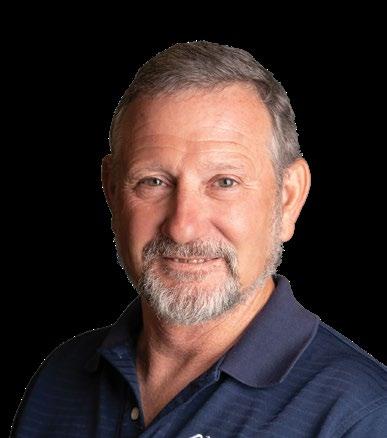 BILL BARLOW
BILL BARLOW
County resident and should submit their application for the scholarship by June 1. The application can be found online at gvp.org. The scholarship reflects GVP’s investment in our community and our industry.
GVP’s scholarship has helped multiple young people launch their successful career in the trades. Each of the past five Lineworker Scholarship recipients has earned or is working toward their journeyman credential. Last year’s scholarship recipient, Branson Padgett, is graduating this month from the CMU Tech Electrical Lineworker program. Grand Valley Power is pleased to have this promising young student begin his career next month as an apprentice lineman at the cooperative.
As the number of retirements grow and the number of young people pursuing trades declines, it is becoming more important than ever for utilities to support educational opportunities. GVP members rely on skilled lineworkers to safely restore power to their homes and businesses when it is disrupted, and the industry has a responsibility to prepare future generations for these jobs.
$2,000 S C H O L A R S H I P



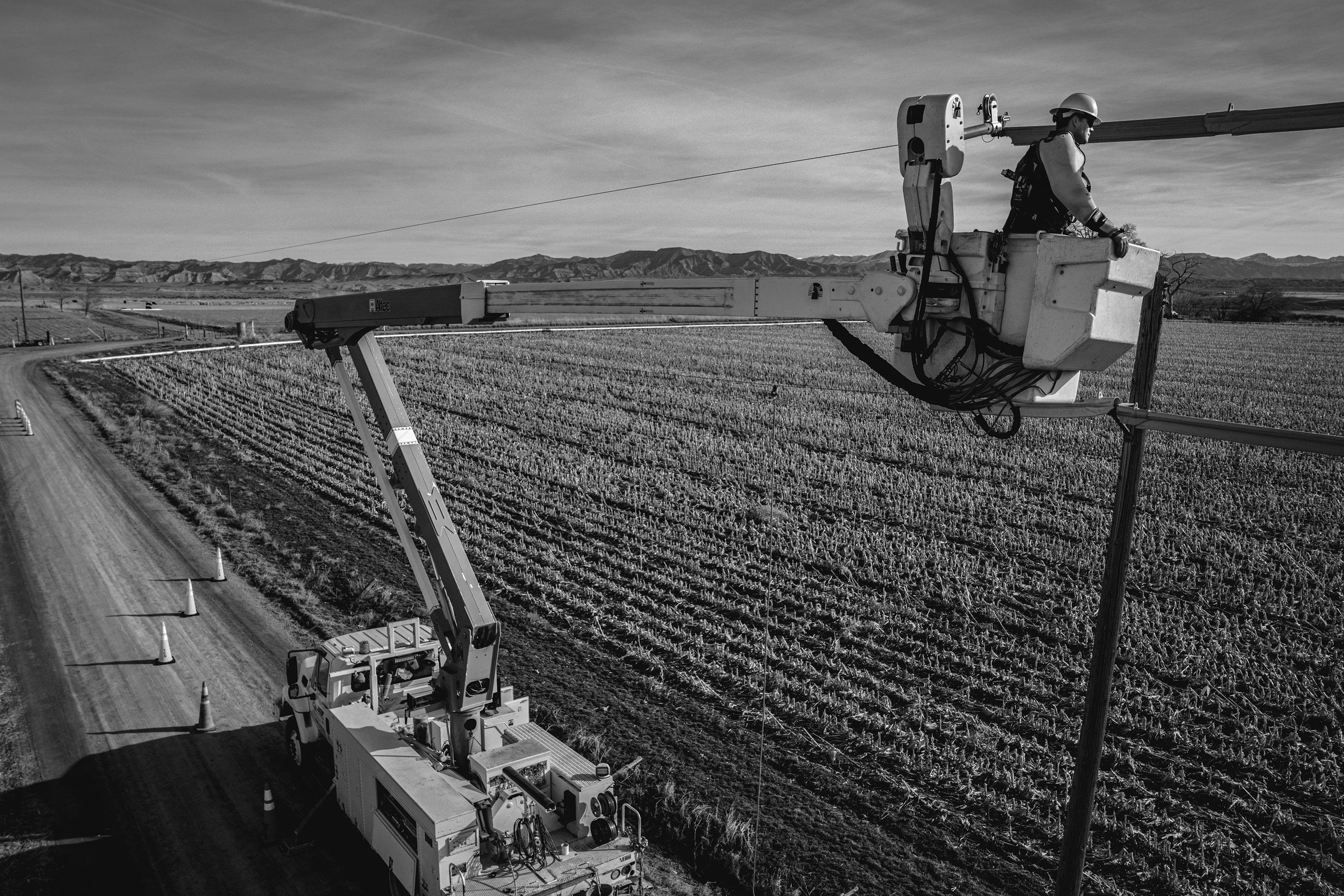

Above the red rock canyons of the Colorado National Monument, where the wind blows through sagebrush and pinyon-juniper forests, residents are preparing for the threat of wildfire.
Glade Park, once a ranching community, has seen its landscape change due to persistent drought. Rangeland has become 40-acre parcels where people make their homes. The transformation has elevated Glade Park to one of the highest at-risk areas for wildfire in Mesa County. Over the past year, spurred by the convergence of creativity and rural living amidst high wildfire risk, residents have mobilized to organize, educate, and facilitate mitigation efforts, fostering wildfire resilience within the community.
The community has achieved remarkable feats in becoming a fire-adapted community. Working with Two Rivers
Wildfire Coalition, a group of volunteers has facilitated the $30,000 removal of vegetation on private lands, protecting homes and evacuation routes. This concerted effort, driven by a shared sense of responsibility, has significantly reduced the potential fuel for wildfires in two adjacent neighborhoods.
But their journey is far from over. At the forefront of their endeavors is the upcoming Community Wildfire Preparedness Day, scheduled for May 4 at the Glade Park Fire Station from 11 a.m. to 3 p.m. This event serves as a cornerstone of their outreach efforts, aiming to educate the wider community on the risks posed by wildfires and impart essential knowledge on emergency alert registration,
evacuation planning, and adopting wildfireready lifestyles.
As they march steadily towards their goals, this community stands as an example of what can be achieved when neighbors come together in pursuit of a common cause.
In a quiet, timid voice, she said, “Can you hear me now?” Cindy Roling didn’t mean to sound like a Verizon Wireless commercial, but that is how she describes her first few times on the dispatch radio when she began working at Grand Valley Power in March 2006. Prior to serving as GVP’s dispatcher, Cindy was a project accountant for a pipeline production company. She had never used a dispatch radio, didn’t know anything about the electrical industry, and never imagined the deep impact that GVP would have on her life. Whether it is a service call for outages, work orders, utility locates, security lights, or trees, Cindy is the friendly, bubbly voice answering those calls and dispatching the GVP linemen — her “boys” as she fondly calls them — for more than 18 years.
Now it will be our turn to ask Cindy, “Can you hear me now?” If she is not out of cell service range on her first trip to Yellowstone National Park or exploring new camping spots, she will be in the stands cheering for her grandson at his baseball games. As Cindy prepares for retirement mid-May, she is most excited to spend more time with her children and grandchildren. “We want to pack up the camper and the dog and go for a visit,” she says with a big smile, referring to her son who lives in Arizona with his wife and two children. Cindy also has a son, daughter-in-law and grandson who live in Grand Junction. Cindy’s contagious laugh, cheerful personality, and warm presence will be missed at GVP. However, fun and exciting opportunities await. Please join us in congratulating Cindy on her retirement after 18 years of service to Grand Valley Power.
 Cindy Roling, retires after 18 years of service at Grand Valley Power.
Cindy Roling, retires after 18 years of service at Grand Valley Power.
Three Grand Valley Power board directors earned certificates last fall from the National Rural Electric Cooperative Association. NRECA director certificate programs ensure that cooperative directors continue to recognize, understand, and navigate industry trends and apply this knowledge effectively within cooperatives. The courses offer three tiers of professional development, along with additional educational resources that provide directors with opportunities to continue their growth and advance their knowledge of the industry.
The Credentialed Cooperative Director certificate requires a director to take five courses that are focused on the necessary skills to serve as an elected official. Courses cover topics including director duties and liabilities, understanding the electric busi ness, board operations and process, strategic planning, and financial decision making.
The Board Leadership Certificate includes the five CCD courses with an addi tional 10 credits from a variety of specialty areas, including grassroots, power supply, cooperative business model, governance, financial, communications, technology, and risk management.
The Director Gold credential is the final tier that consists of the CCD, BLC, and three additional education credits from the BLC specialty areas.
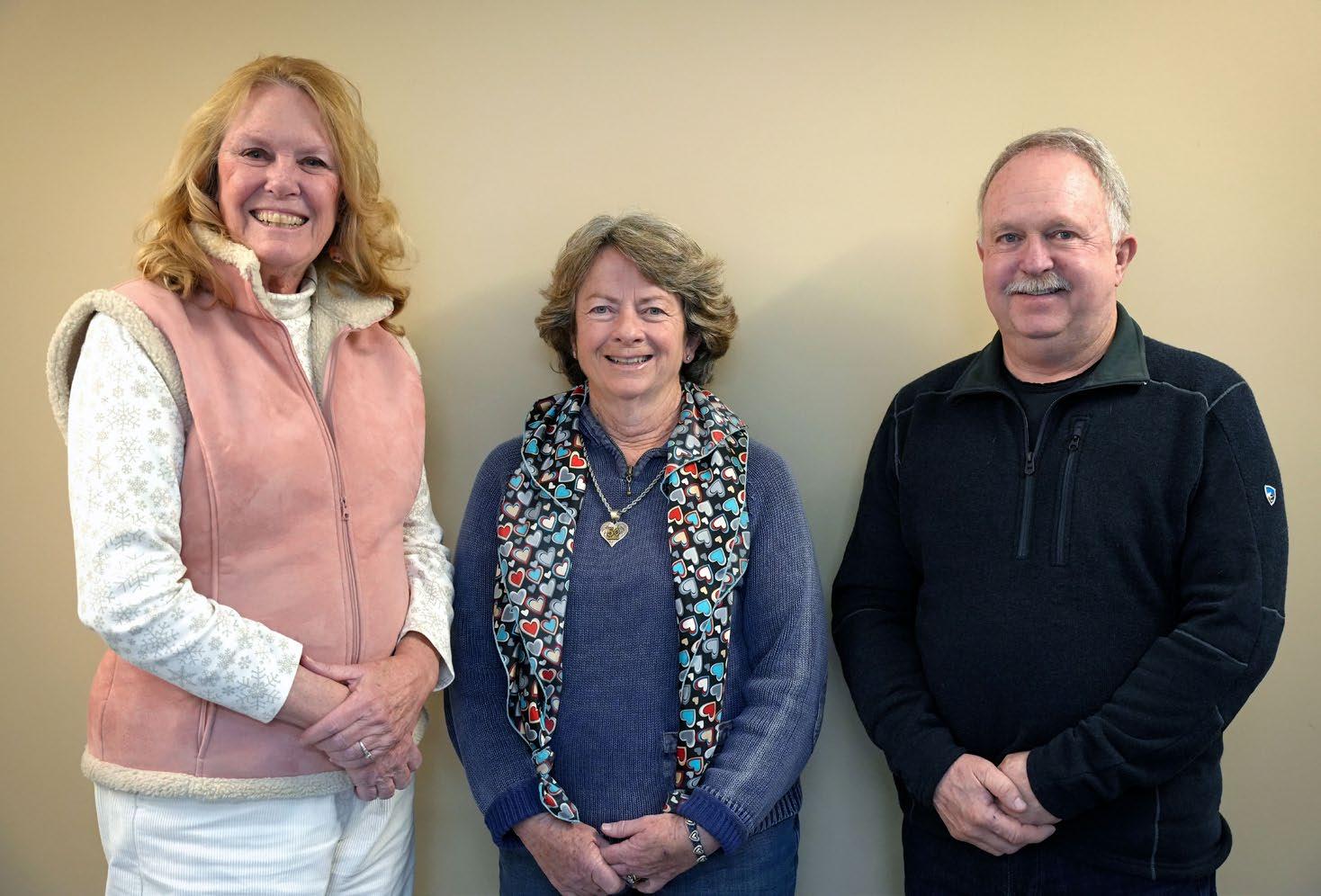

Director petitions are available for eligible Grand Valley Power members who want to run in the August board election. Petitions can be picked up at GVP headquarters at 845 22 Road, Grand Junction. Three director positions are up for election every year. Directors whose terms expire in 2024 are Jesse Mease, Bill Rooks, and Brian Woods.

Welcome to WIRED WISDOM, a column dedicated to quick facts, tips, and insights relating to the energy industry and what Grand Valley Power provides you – our members! As your dedicated electric cooperative, we strive to empower you with knowledge and information to be a wellversed energy consumer
Next month, our first tip will cover solar.
The rider keeps her hands quiet and squeezes with her legs.
Acknowledging the silent signal, the animal throws on the brakes, and her black body seems to defy gravity as she leans into the turn and skirts around the first of three barrels.
Barrel racing is all about connection, says Trista Linsacum. “We are very involved in getting our horse to move and giving them cues,” she explains. Linsacum, a Grand Valley Power member and barrel racer, has been focused on keeping her riding partner — Tyson — and herself healthy so they can enter the Colorado Stampede in Grand Junction over Memorial Day weekend.
A revival of a once popular Professional Rodeo Cowboys Association event held annually in Grand Junction, the Colorado Stampede is returning to the Mesa County Fairgrounds May 24-26. It will feature bull and bronc riding, steer wrestling and roping


events, and barrel racing, among others. Laura Mendel, a GVP member who lives on the Grand Mesa, is managing the rodeo. She organized rodeos on the Front Range before moving to her grandmother’s homestead last year. Grand Valley Power is proud to sponsor the rodeo’s barrel racing event and is excited to support our community and rodeo competitors.
Linsacum remembers when her dad bought her mom a horse. The daughter of a United States Marine, she didn’t grow up in a rodeo family. She and her older sister spent a lot of time at the barn with their mom. When Linsacum started riding, she tried a variety of equestrian disciplines, from hunter and jumper to Western styles such as reigning and cutting. It didn’t take her long, though, to hone in on barrel racing. Linsacum loved to ride fast and she liked the adrenalin rush that came with the speed of racing around barrels. “While I was riding different disciplines to improve my horsemanship, I knew barrel racing was what I was going to stick with,” Linsacum says. She competed in her first amateur rodeo in high school and her first professional rodeo in her 20s. Over time, she has come to appreciate the bond between rider and steed. It’s a connection, a trust between athletes that transcends all else in the arena, she says.
for and appreciates the athleticism of the animals. “They are athletes, too,” she says. “We ask them to do something that is not natural for them: run full speed then shut themselves down and turn a barrel, tight and efficient.”
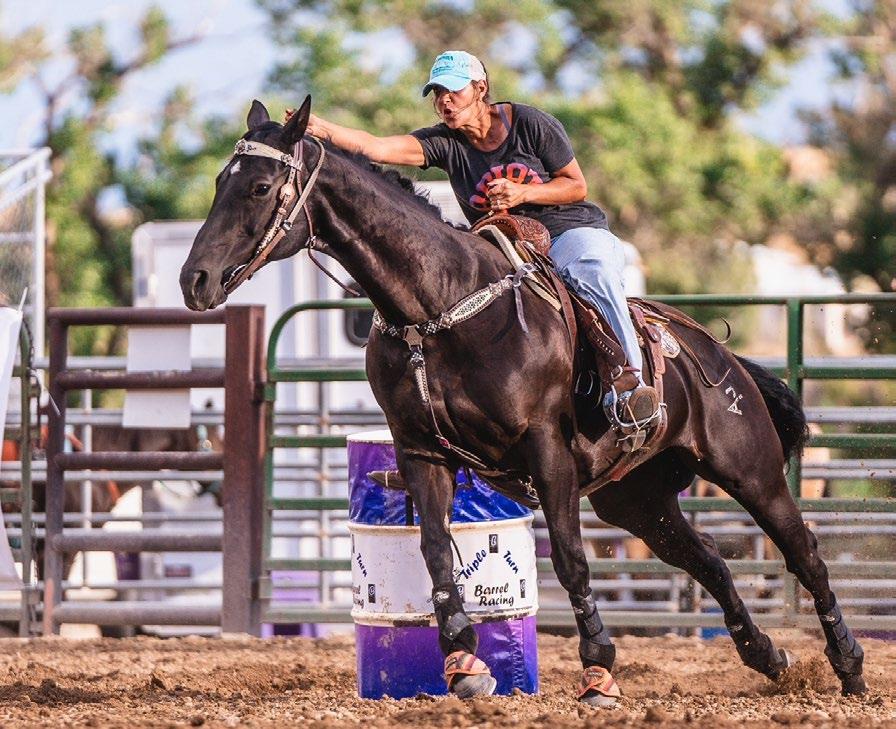

During competition, Linsacum looks
Linsacum, who is also a wife and mother with three girls of her own, trains several days every week. She and Tyson engage in a variety of conditioning activities — including trails and hills — to keep the horse’s mind stimulated. Linsacum is hopeful they’ll be ready for rodeo season and to compete in the Colorado Stampede. “Success is different for everybody,” she says. “Sometimes it’s setting a goal to make a clean run and making that happen. Sometimes it’s placing in a go round. Sometimes it’s just showing up, staying confident, and competing against tough, strong women. It’s important to find what keeps you going and adds fuel to your fire.”

Women are raving about the life-changing effects of this powerful formula.
There’s no denying that people — mostly women — are on a mission to discover the best way to eliminate fine lines and wrinkles permanently. The $14 billion dollars spent on aesthetic procedures in 2021 alone is a clear indication of that fact.
But now science appears to be offering a simpler solution. It’s a special delivery technology adapted for skincare that gets superior results.
Known as advanced liposome technology, this powerful distribution system ensures that vital nutrients are delivered exactly where your skin needs them the most, providing your skin with maximum anti-aging benefits.
Al Sears, MD, of Palm Beach, Florida, recently released an anti-aging cream that adapts this breakthrough medical technology into the realm of skincare, and he’s struggling to keep up with consumer demand.
Dr. Sears is South Florida’s leading anti-aging pioneer. He has authored over 500 reports, scientific papers, and books on anti-aging. A frequent lecturer at global anti-aging conferences, Dr. Sears spoke at the WPBF 25 Health & Wellness Festival featuring Dr. Oz, along with special guest, Suzanne Somers. Thousands of people were in attendance as Dr. Sears discussed his latest anti-aging breakthroughs.
This powerful cream, known as Restore, keeps selling out faster than it’s produced — and people are raving about the effect it’s having on their skin.
“Within a few minutes of applying the cream, it visibly plumps out the under-eye area and my cheeks as well as those annoying lines that deepen as we age between the nose and lips.
It also felt like it was tightening and smoothing my skin at the same time. I definitely feel I look younger whenever I use it,” said Amy B., of Montville, New Jersey.
“The lines around my mouth and eyes are filled in and my skin is tightened. I love having younger-looking skin, so I will continue using Restore” raves Cathy C., of Florida.
The best part is that this cream has no adverse side effects, doesn’t require a doctor’s visit or prescription, and is 100% natural.
“Advanced liposome technology ensures that vital nutrients are delivered exactly where your skin needs them the most.”
The dermis is the underlying layer of skin that supplies nourishment and oxygen, and removes waste. In other words, it’s responsible for keeping your outer layer of skin healthy. Liposome technology is designed to support and nourish this deeper layer of skin by delivering nutrients directly to it.
“All of Restore’s powerful ingredients are encapsulated in a liposome shell — an organic container that carries the beautifying agents deep into the skin cells,” explained Dr. Sears.
“Restore’s liposome shell is composed of phosphatidylcholine or PC for short. While cell membranes repel water, they absorb PC because they’re actually made of it. As a result, Restore is delivered deep into the cell for maximum firming and

volume.”
When you apply liposome cream to your face, the liposomes in the skin cream work their way inside your skin, fuse with the skin cell membranes and then release their contents directly to the cells. Regular skin creams don’t have this capability.
Once it’s penetrated the deeper layer of skin, Restore releases a unique blend of botanicals, vitamins and essential oils that reduces the appearance of fine lines and wrinkles, gives skin a more even tone, and moisturizes the interior layers of your dermal cells, firming and plumping your skin.
Restore’s first skin-enhancing agent is Madonna lily leaf stem cell extract. It helps produce an eventoned complexion. In a clinical study reported in the Journal of Cosmetic Dermatology, participants treated with this extract for 28 days showed improvements in skin luminance and tone around the eyes.
Restore is also loaded with vitamin C, which British researchers have found reduces both wrinkles and dryness. “In Restore we use magnesium ascorbyl phosphate, a more stable form of vitamin C that
doesn’t break down in liquid as does ordinary C,” explains Dr. Sears. “That means the antioxidant molecules stay intact within your skin cells where they can prevent damage from dangerous free radicals.”
This powerful formula also features guarana seed extract, coenzyme Q10, and avocado oil. Japanese researchers have also found that coenzyme Q10 supports production of the thin membrane that separates layers of your skin, and French studies have shown that avocado oil improves skin cell metabolism and enhances skin thickness.
To secure the hot, new Restore formula, buyers should contact the Sears Health Hotline at 1-800-2353785 TODAY. “It’s not available in retail stores yet,” says Dr. Sears. “The Hotline allows us to ship directly to the customer.” Dr. Sears feels so strongly about Restore, all orders are backed by a 100% money-back guarantee. “Just send me back the bottle and any unused product within 90 days from purchase date, and I’ll send you all your money back.”
Call NOW at 1-800-235-3785 to secure your supply of Restore. Use Promo Code CORS524 when you call. Lines are frequently busy, but all calls will be answered!
imple doesn’t always mean easy,” Christopher Kimball writes in his book Milk Street Simple. Rather, he writes, a simple recipe is one that is constructed so each step and ingredient is essential and in balance with the whole.
Kimball’s recipe for chow mein with broccoli and bell peppers checks the “simple” box — the harmony of the ingredients and the minimal steps make this a great option for a weeknight dinner. The fact that this is cooked in the oven on a rimmed baking sheet and uses instant ramen noodles also makes it quick and easy. Let us know how you like this recipe — find us on Facebook at COCountryLife to share a photo and your comments!

Enter our contest to win a copy. Visit Contests at www.coloradocountrylife.coop for details on how to enter.
Start to finish: 40 minutes | Servings: 4
Ingredients
3 tbsp soy sauce
2 tsp oyster sauce

DID YOU KNOW?
Ramen noodles contain wheat flour, salt, water, and a special alkaline water called “kansui.” Kansui is what gives the noodles their unique flavor and springy texture.
Source: San J

2 medium garlic cloves, finely grated and/or 2 tsp finely grated fresh ginger
Kosher salt and ground black pepper
Three 3-ounce packages instant ramen noodles, seasoning packets discarded
3 c boiling water
5 tbsp neutral oil (such as canola or vegetable oil), divided
12 oz broccoli crowns, cut into 1½-inch florets
2 medium red bell peppers, stemmed, seeded, and sliced into ¼-inch strips
Instructions
Heat the oven to 500 degrees with a rack in the middle position. In a small bowl, stir together the soy sauce, oyster sauce, garlic, ¾ tsp pepper and 3 tbsp water; set aside.
Place the noodles in a large heatproof bowl, pour in the boiling water, and stir. Let stand, stirring once or twice, until the noodles are pliable, about 6 minutes, then drain. Toss with 3 tbsp oil, then set aside.
Meanwhile, generously mist a rimmed baking sheet with cooking spray. On the baking sheet, toss the broccoli with 1 tbsp of the remaining oil, then distribute in an even layer. Roast until just starting to soften, about 4 minutes.
Using a spatula, push the broccoli to one end of the baking sheet. Pile the bell peppers onto the center, drizzle with the remaining 1 tbsp oil, and toss. Push the peppers to the opposite end of the baking sheet. Add the noodles to the center in an even layer. Roast until the broccoli is lightly charred, the peppers are tender, and the noodles begin to crisp, 10 to 12 minutes.
Remove from the oven and drizzle the noodles and vegetables with the soy sauce mixture. Using tongs, toss well. Taste and season with salt and pepper.
Optional garnish: Thinly sliced scallions, chili-garlic sauce, toasted sesame seeds.
Excerpted from MILK STREET SIMPLE by Christopher Kimball. Copyright ©2023 by CPK Media, LLC. Photographs by Erik Bernstein. Used with permission of Voracious, an imprint of Little, Brown and Company, New York, NY. All rights reserved.
Everyone feels the hurt as you age, but CBD can help you deal with it.BY BETH GILES
Life really does fly by. Before I knew it, my 60s had arrived, and with them came some new gifts from dear ol’ Mother Nature—frequent knee pain, stress, low energy and sleeplessness. Now, I’m a realist about these things, I knew I wasn’t going to be young and springy forever. But still, with “golden years” nearly on my doorstep, I couldn’t help but feel a little cheated. That is until I found my own secret weapon. Another gift from Mother Nature. It began a few months back when I was complaining about my aches and pains to my marathon-running granddaughter, Jen. She casually mentioned how she uses CBD oil to help with her joint pain. She said that CBD gave her more focus and clarity throughout the day and that her lingering muscle and joint discomfort no longer bothered her. She even felt comfortable signing up for back-toback marathons two weekends in a row this year. That made even this self-proclaimed skeptic take notice.
But I still had some concerns. According to one study in the Journal of the American Medical Association, 70% of CBD products didn’t contain the amount of CBD stated on their labels. And, as a consumer, that’s terrifying!
If I was going to try CBD, I needed to trust the source through and through. My two-fold research process naturally led me to Zebra CBD.
First, I started calling my family and friends. Call me old fashioned but I wanted to know if there were people whom I trusted (more than anonymous testimonials) who’ve had success using CBD besides my granddaughter.
Secondly, I wanted cold hard facts. Diving deep into the world of CBD research and clinical studies, I came across Emily Gray M.D., a physician at the University of California at San Diego (UCSD) Medical School and medical advisor to Zebra CBD who is researching the effects of CBD. Dr. Gray wrote “early results with CBD have been promising and we have a lot of research underway now. I’ve had several patients using CBD with good success. It’s important that you know your source of CBD and how to use it properly.”
After hearing it from the doctor’s mouth, I returned to my research, asking more people and was amazed by the number of close friends and family who were already on the CBD train. Apparently, I was the only one without a clue! And funny enough, a couple of friends who commented were using the same brand as my granddaughter—Zebra CBD. There was no consensus as to why they were using CBD, but the top reasons given were for muscle & joint discomfort, mood support, sleep support, stress and headaches, as well as supporting overall health & wellness.
Eventually, even the most skeptical of the bunch can be won over. With a trusted CBD source in mind, I decided to give it a go.
When I viewed Zebra CBD’s selection online, I was impressed by its array of products, including CBD oils called tinctures, topicals, chewable tablets, mints and gummies. After reading on their website that all their products are made with organically-grown hemp, I ordered... and it arrived within 2 days!
The first product I tried was the Rub. Now this stuff was strong. Immediately after rubbing it on my knee, the soothing effects kicked in. It had that familiar menthol cooling effect, which I personally find very relieving. And the best part is, after two weeks of using it, my knee pain no longer affected my daily mobility.
The Zebra Mint Oil, on the other hand, had a different but equally positive effect on my body. To take it, the instructions suggest holding the oil in your mouth for about 30 seconds. This was simple enough, and the mint taste was, well, minty. After about 15 minutes, a sense of calm came over my body. It’s hard to describe exactly. It’s more like an overall sense of relaxation—as if I just walked out of a spa, and now I’m ready to seize the day. Needless to say, I’ve really enjoyed the oil.
While it hasn’t been a catch-all fix to every one of my health issues, it has eased the level and frequency of my aches. And it sure doesn’t seem like a coincidence how much calmer and more focused I am.
All-in-all, CBD is one of those things that you have to try for yourself. Although I was skeptical at first, I can safely say that I’m now a Zebra CBD fan and that I highly recommend their products.
Also, I managed to speak with a Zebra CBD spokesperson willing to provide an exclusive offer. If you order this month, you’ll receive $10 off your first order by using promo code “CL10” at checkout. Plus, the company offers a 100% No-Hassle, Money-Back Guarantee. You can try it yourself and order Zebra CBD at ZebraCBD.com/Colorado or at 1-888-762-2699.
More than 20 electric cooperative communicators and member services professionals from across the state met at San Isabel Electric’s headquarters in Pueblo West in April. The two-day conference kicked off with a day of service and giving back to the community by reading to prekindergarten students at local schools.
Several guest speakers presented on topics including improving networking strategies, developing crisis communications plans, and using artificial intelligence responsibly and ethically. The group also had the chance to tour the innovative Colorado State Patrol and Colorado Department of Transportation dual dispatch center.
The group meets twice each year to learn skills and share ideas to serve co-op members better.
On April 17, Rep. Hamrick (D-Centennial) and Rep. Soper (R-Delta) read a tribute at the Colorado Capitol that recognized Colorado Electrical Lineworker Appreciation Day on April 18. The day will be observed on April 18 each year to honor and recognize the crucial role that lineworkers play in providing safe and reliable electricity to communities throughout Colorado.
The tribute, recognizing lineworkers as the first responders for utilities, received support from Colorado’s House of Representatives. Rep. Hamrick and Rep. Soper expressed gratitude for lineworkers, stating that lineworkers are essential to maintaining a reliable electric grid.
CREA Executive Director Kent Singer reflected on the tribute. “Electric lineworkers are the unsung heroes of our modern society,” Singer said. “Everything we rely on for a comfortable life — food, shelter, computers, televisions, and cellphones — is dependent on a functioning electric grid. Electric lineworkers are the ones who keep that grid in service at all times of the day and night and through every weather condition imaginable.”
SO FAR IN IN 2024:
• 6,016,426 Colorado Country Life pages offset
• 722 trees planted in Mendocino, California
TO DATE SINCE CCL STARTED PARTICIPATING IN THE PROGRAM IN 2018:
• 183,446,506 Colorado Country Life pages offset
• 22,014 trees planted

San Isabel Electric Communications Manager Paris Elliot reads to a prekindergarten class at a school in Pueblo as part of a day of service before the co-op communicators meeting.
The Colorado electric co-op member services and communicators group meets in Pueblo West for its spring meeting.
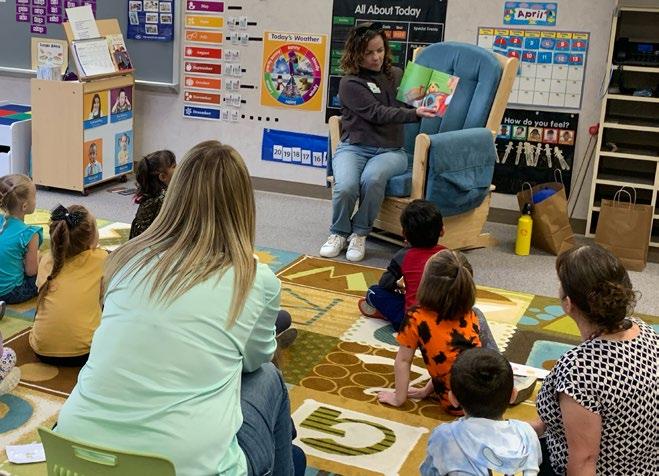
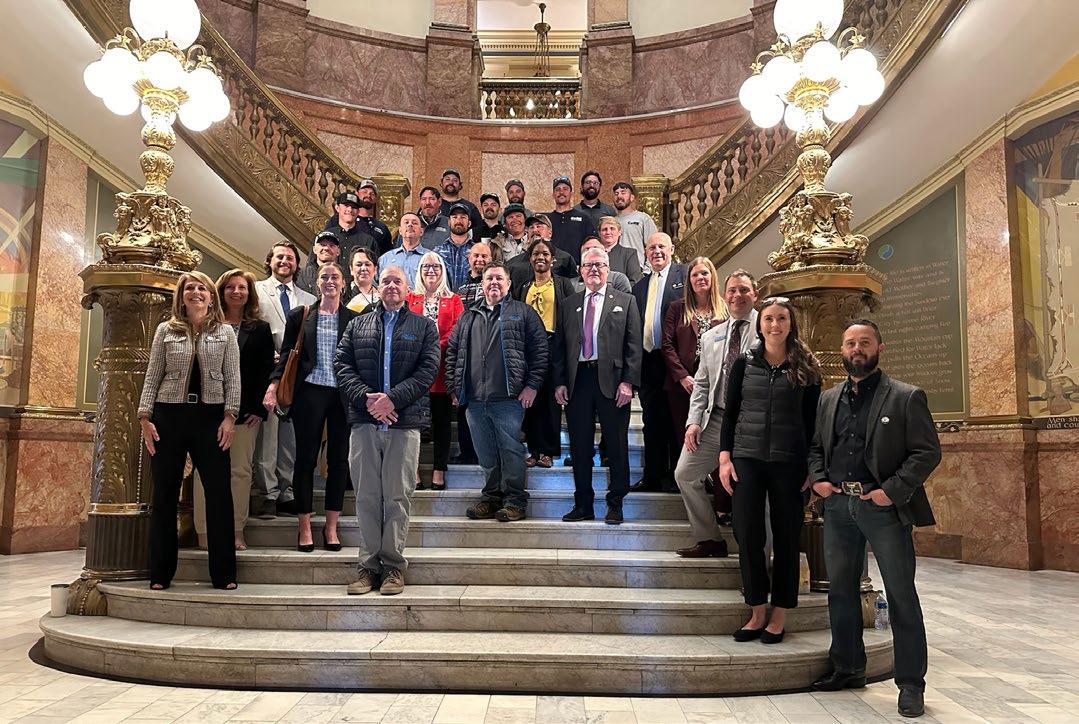
Lineworkers and representatives from various utilities including, Poudre Valley REA, Mountain View Electric Association, United Power, CORE Electric Cooperative, Colorado Springs Utilities, and Black Hills Energy attended the tribute at the Capitol.

The paper content of this publication has been certifiably reforested via PrintReleaf — the world’s first platform to measure paper consumption and automate reforestation across a global network of reforestation projects.
Colorado electric cooperative lineworkers and representatives visit the Capitol for the House tribute recognizing Lineworker Appreciation Day.Flyers, satellite dishes, posters, basketball hoops, decorative lights, even hunting stands. You name it, someone has tried to staple, nail or tie it to a power pole. Here’s a quick look at the dangers and pitfalls associated with unauthorized pole attachments.
Many state and local laws and the National Electrical Safety Code prohibit any unauthorized items on poles. Utilities can face fines if these attachments aren't removed.
Even small holes can allow moisture and insects past the pole sealant, which can shorten the life of the pole or weaken it and cause it to fall in a storm.
Posters and flyers can hide identifying markers on poles and slow repair work.
Staples, tacks and nails can puncture a lineworker’s insulated rubber gloves and expose them to electric shock.
Objects can cause a worker to fall if they snag their boots.
Nails and tacks can impede climbing hooks from sinking into the wood.
A person who gets too close to energized lines while attaching an object can be electrocuted.
Some materials posted on poles, like mirrors or holiday decorations, can be a distraction to drivers.


Jennings Hester, 35, is standing knee-deep in the South Platte River outside Denver. It’s far more tranquil than his earlier days as a 245-pound inside linebacker on a full-ride scholarship to the University of Alabama as part of football coach Nick Saban’s first recruiting class. Now, he’s more interested in fish running and taking the backing off his line than stopping a running back coming through the line.
Sure, fly-fishing can be frustrating at times. Your line gets tangled, tying the knots is a pain, and the fish might not bite. But it’s also tremendously therapeutic, which Hester knows better than anyone. You’re out in nature, standing in a river, alongside the origin of all life itself. It doesn’t even matter if you get a fish on the line. And as well as doing it for his own good, more importantly Hester is doing it for others — especially the other men standing alongside him in the water.
Hester founded Denver-based nonprofit Fishing the Good Fight in 2019 when he realized this was the type of organization he wished he’d had access to 15 years ago. For the past four years, it’s helped improve men’s mental health by leveraging the healing benefits of fly-fishing while destigmatizing the complex intersec-
BY EUGENE BUCHANAN
tion of modern masculinity and mental health. It also provides the resources to help men take action.
Colorado is a good state for it. Rating the prevalence of mental illness and access to care, a study by Mental Health America found that, in 2022, 23.16% of Colorado’s adults have some kind of mental illness, ranking it 30th among all states in overall mental health. And more than 80% of deaths by suicide in the state are men. Among its initiatives, FTGF hosts small group retreats in mountain towns that include fly-fishing instruction, group sessions focused on mental health, and one-on-one therapy sessions with licensed therapists. It also subsidizes therapy for those in need and hosts biweekly fly-tying meetups and other programs.
Hester began experiencing ongoing depression while playing football at Alabama. And he’s not timid about it, unlike the fish his participants chase. “I got hurt during my junior year, and then things just spiraled and got worse,” he said. “I struggled with depression and anxiety for as long as I can remember, but I thought that was just normal.” On average, he said, it takes more than a decade for someone to go from having symptoms to getting any help. “Then I got dragged in by my family to get help and I found nature,” he said.

“My brother-in-law gave me his fly rod, and I was instantly hooked. My brain turned off, and I found peace.”
That boost was the impetus for Hester to pack up and move to Colorado, where getting out in nature was easier. “Nature is so helpful when dealing with depression,” he said, touting such books as The Nature Fix by Florence Williams. “There are significant documented benefits to the healing power of nature and the way it can rewire your brain.” And fly-fishing is a great way to experience it. “You have to be present in the moment and can’t think of any other stressors,” he said. “It’s a healthy, therapeutic outlet for guys. It isn’t sitting in a bar or watching sports. And it gives you a sense of accomplishment that most guys don’t have outside work. I just wanted to do something for guys in my situation.”
He started by selling hand-tied flies and donating proceeds to mental health organizations. Then he began brainstorming while fly-fishing with childhood friend Baker Arena, an attorney now living in Grand County who was dealing with his own anxiety issues.
“We reconnected at a friend’s wedding and went out fishing, and he shared with me what he was going through,” said Arena, now the organization’s board chair and co-founder. “We’ve always been open about our own mental health with each other.”
In a self-professed “ADHD moment,” Arena applied for 501(c)(3) status, incorporated Fishing the Good Fight as a nonprofit, and gave it to Hester as his birthday present. “I gave him a binder with all these documents and said, ‘Let’s get to work.’” It started with selling flies and progressed from there. Four years later, Fishing the Good Fight has a fleet of programs, with hundreds of participants from 20 different states. They host retreats from Friday through Sunday that include fishing on private water everywhere from Wyoming to Colorado and four group therapy sessions with professional clinicians from Denver partner Elevated Wellness, which runs their mental health programming. FTGF also offers the monthly program Off the Water, which connects men in between retreats with speakers, podcasts, fly-tying nights, and biweekly meetups.
“It’s working and I’m so proud to be a part of it and help achieve Jennings’ vision,” Arena said. “One hundred percent of the guys who go through the program go on to get therapy afterward and try to get better. We’ve definitely saved a life or two. It’s the most rewarding thing I’ve ever done.”
In Colorado, they head everywhere from the Eagle and South Platte’s Cheesman Canyon to the Arkansas near Salida. “Our programming rotates around the state, but it’s always on private
Once people relax, they can let all the deep, heavy things float down the river.”
— Jennings Hester founder of Fishing the Good Fight

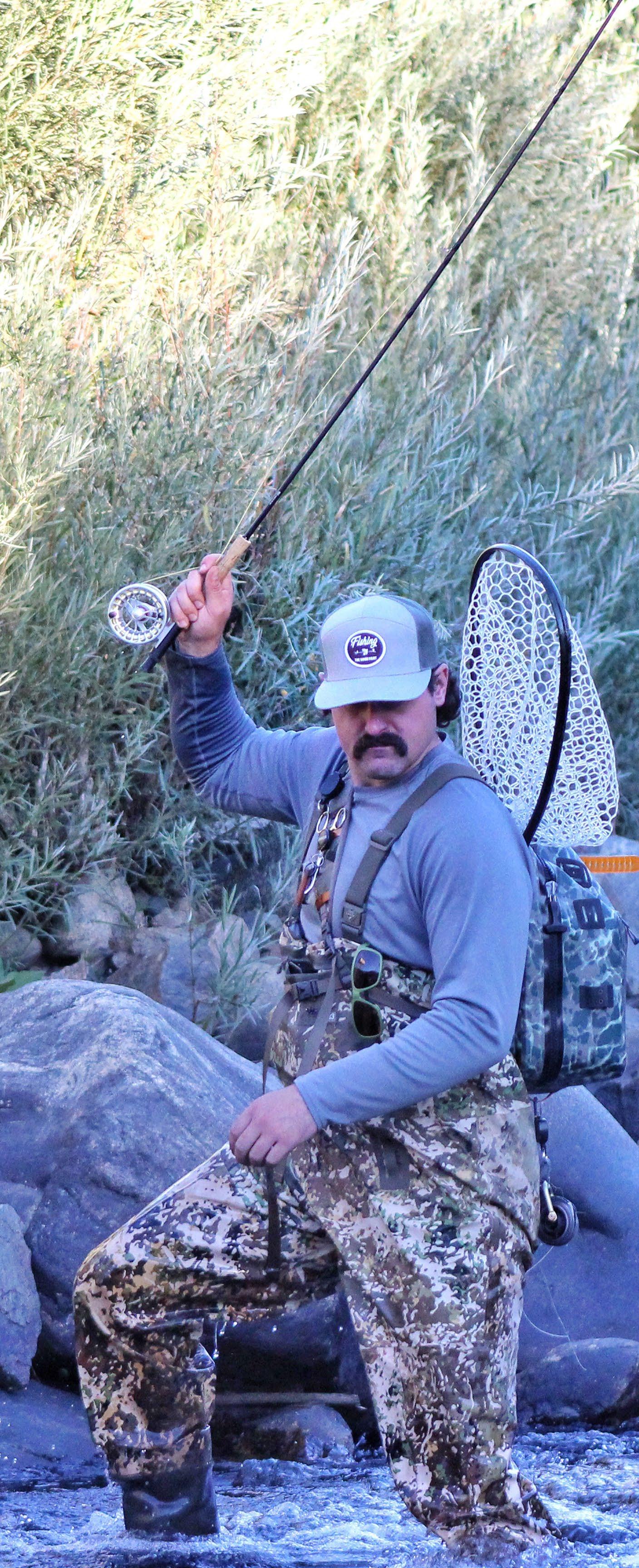 Men gather for a retreat at Duck Lake on Guanella Pass. All photos courtesy of Fishing the Good Fight.
Jennings Hester finds peace casting a line in the river.
Men gather for a retreat at Duck Lake on Guanella Pass. All photos courtesy of Fishing the Good Fight.
Jennings Hester finds peace casting a line in the river.


I just wanted to do something for guys in my situation.”
— Jennings Hester
water,” Hester said. “We try to work deals with private landowners as much as we can.”
Water, he added, is the big equalizer. “Most of our group work takes place on the water because it’s so relaxing and peaceful,” said Hester, whose day job is in sales for a sports technology firm — with one client being the University of Alabama. “Once people relax, they can let all the deep, heavy things float down the river. We get everyone — from guys who have never touched a rod to even guides.”
Their participants couldn’t ask for a better role model. “He brings a lot to our organization and mission, especially vulnerability and authenticity,” FTGF Executive Director Jim Flint said. “When he’s speaking to our groups, he approaches it as both a former football player and one of them, relating his own struggles.” Flint said other men see their own story in him. “It takes another man to tell their story and be vulnerable for people to open up and tell their own stories.”
If anyone knows how powerful this can be, it’s Andrew Luter, who came through the program as a participant, then a donor, then a volunteer, and now a board member. Founder of investment firm Rio Chato, which specializes in funding active-lifestyle entrepreneurial ventures, he was suffering from anxiety and depression when he met Hester fly fishing on the South Platte. “That’s where he told me his story,” Luter said. “He told me he tied flies and then went into his background. Here was this big linebacker who got great grades and seemingly had everything, but who was completely opening up to me. I had suffered from some anxiety already, and so we started talking.” Next thing you know, Luter joined one of FTGF’s 2021 retreats on the Roaring Fork outside Carbondale and was as hooked as any fish he had on the line. “It was a transformational experience,” he said. “The outdoors has always been my therapist, and it was super impactful.”
And Hester is the perfect host to break the ice, he said. “He’s a key piece of it and lit the fuse to get it going. If you want to break down barriers for people, you get a big, 6-foot-2, burly former linebacker guy like him crying. It allows other men to open up.”
Fishing on a river is the perfect place for men to do so. “There’s something about standing in the river and moving water that lets
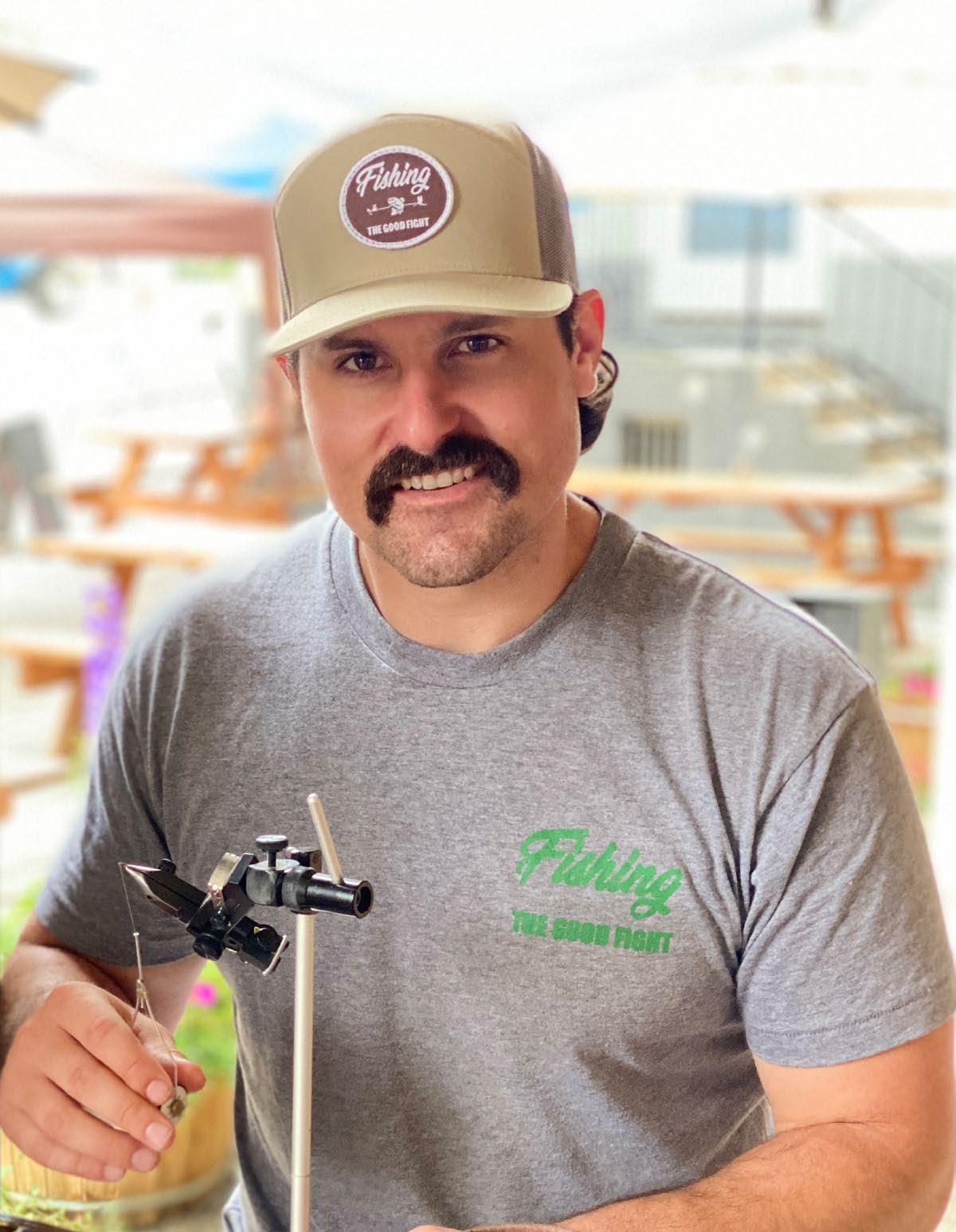
you let go of the heavy-duty stuff,” he said, adding it also lets people feed off one another. “When someone gives a little, someone else gives a little more. It kind of creates this permission of people being able to open up,” Luter said. “It allows men to feel their feelings, because he’s a big macho guy and can still share and be empathetic. That’s what those weekends are all about. They let men feel and talk about their feelings. Fishing is the lure, so to speak, but it’s really about creating a safe place for men to express their feelings.”
Luter added that the success of the program can be seen in participants who return year after year. “For many of them, that’s the one place they feel safe to start talking,” he said. “They have permission. Society doesn’t give men permission to do that.” And the key, he added, is getting outside. “That’s where we’re all supposed to be. Inside is the weird place.”
As for Hester, he’s just happy to continue fishing the good fight to help others. “I never thought it’d take off like this,” he said. “I just wanted to do something good.”
A former reporter for the Denver Business Journal and 14-year publisher and editorin-chief of Paddler magazine, Eugene Buchanan has written about the outdoors for more than 25 years. Buchanan is a former ski patrol and raft and kayak guide whose passion for traveling and writing has taken him to more than 30 countries on six continents. He lives in Steamboat Springs.
Scenes from a FTGF retreat on the South Platte. When he’s not fishing, Jennings Hester works on fly-tying.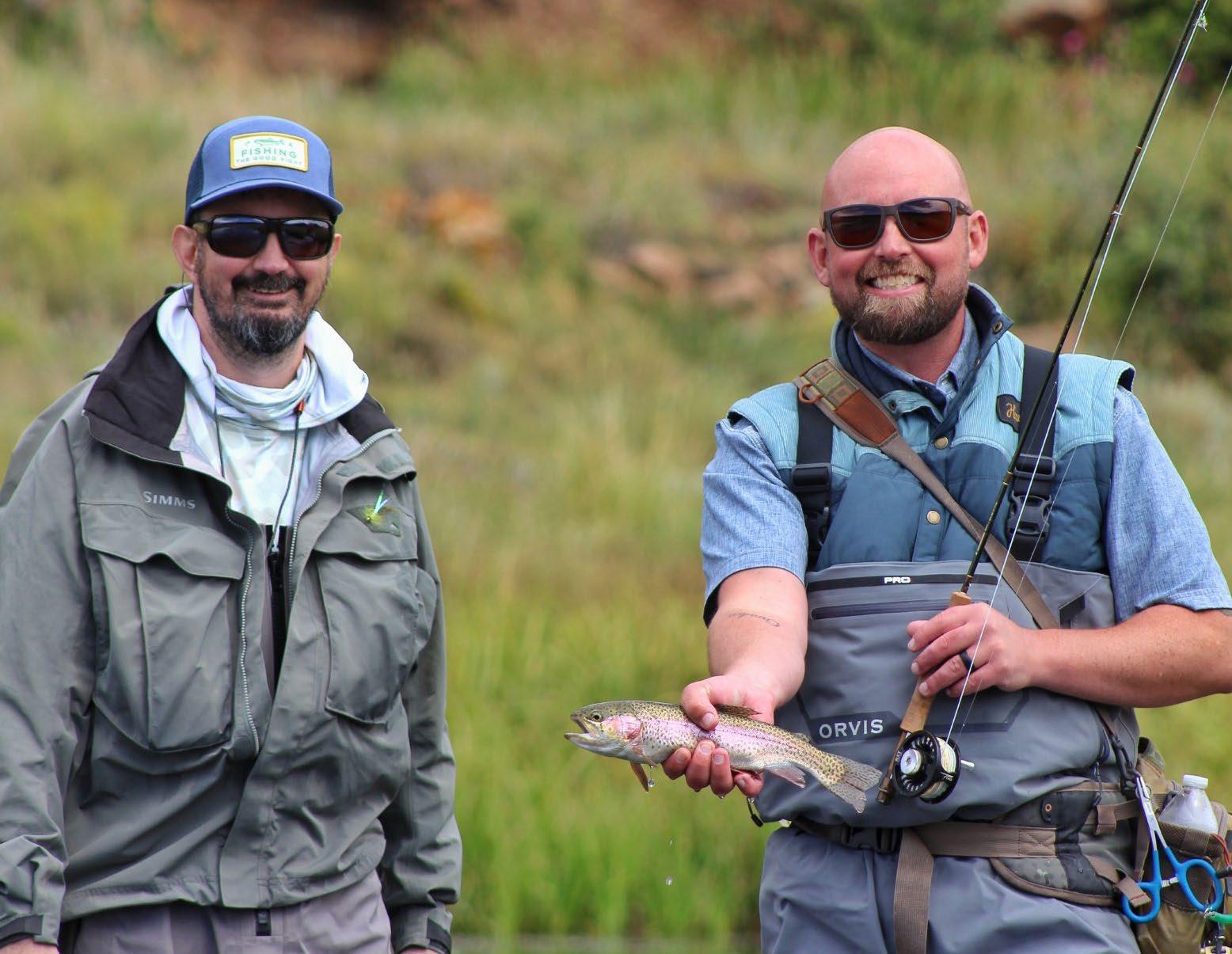


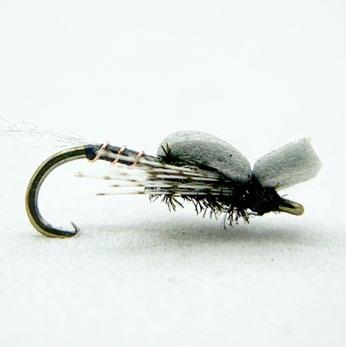
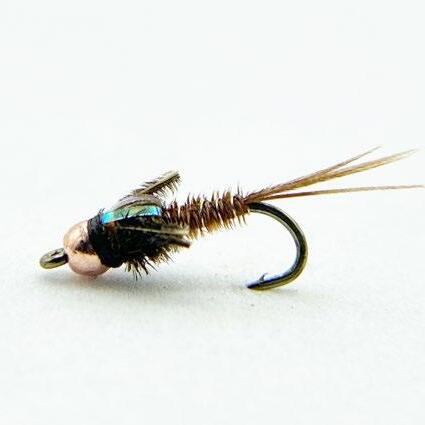




Forget the bookends of May Day and Memorial Day. May is also Mental Health Awareness Month, observed in the U.S. since its founding in 1949 by Mental Health America. The month is observed with media, local events, film screenings, a social outreach campaign, and more. Every year during May, the National Alliance on Mental Health spearheads the movement to raise awareness about it, fighting its stigma, providing support and education tools, and advocating for policies that support the millions of people in the U.S. affected by mental illness. This year, look for its More Than Enough campaign, designed to let everyone know that if even all you did was wake up today, that’s more than enough.
Info: www.nami.org/Get-Involved/AwarenessEvents/Mental-Health-Awareness-Month

Agricultural operations at the Kraft family farms in Morgan County produce alfalfa, corn, milk, manure, and as of this spring, renewable energy.
Husband and wife Chris and Mary Kraft and their son Stratton grow alfalfa and corn crops to feed some 4,500 black-and-white Holstein cattle at the family’s Quail Ridge Dairy near Fort Morgan. Those dairy cows produce about five semi loads of milk each day sold to make mozzarella cheese.
However, those thousands of cows also produce a lot of waste — both liquids and solid manure — that must be constantly managed. At Quail Ridge Dairy, that animal waste adds up to roughly 140,000 gallons per day, Chris Kraft said.
This spring, after two years of construction, including some supply chain and weather delays, the Krafts are happy to see the completion of a facility that will turn that manure into energy. The waste will
produce renewable natural gas through an anaerobic digester system built on 3 acres of their farm.
“In the dairy industry, we’ve committed to doing our part for the environment to reduce our greenhouse gas emissions,” Kraft said. “Producing milk is what we do; this is just the ability to take a system that’s already running and get gas off it.”
As manure decomposes naturally, about 60% of the biogas released is methane, a powerful climate-warming gas. However, if the manure is broken down with the use of bacteria in an enclosed digester without oxygen, the biogas can be purified into renewable natural gas.
Colorado State University Extension explains that anaerobic digestion can be used to decrease on-farm energy costs or increase revenues from energy sales. The gas from a digester can be used in a gas generator to produce electricity or to run gas
Vanguard Renewables currently has six operational manure-to-renewable energy digester sites and three more under construction in Colorado, including this one at Long’s Peak Dairy in Pierce.
Photo by John Maciel.boilers. Or, the gas can be purified and piped or trucked to a natural gas injection site.
The collection of methane from livestock manure can reduce global emissions of methane, reduce carbon dioxide emissions from fossil fuel use, diminish odor from agricultural facilities, and improve water quality, according to CSU Extension.
The Krafts opted to contract with Boston-based Vanguard Renewables, which has a partnership with Dairy Farmers of America. The farmers leased land to Vanguard that builds and operates the digester system while providing another revenue stream for the dairy.
The lease payments will not make farmers rich, by any measure, but every bit of financial assistance to keep family farms in Colorado viable is good news, Kraft said.
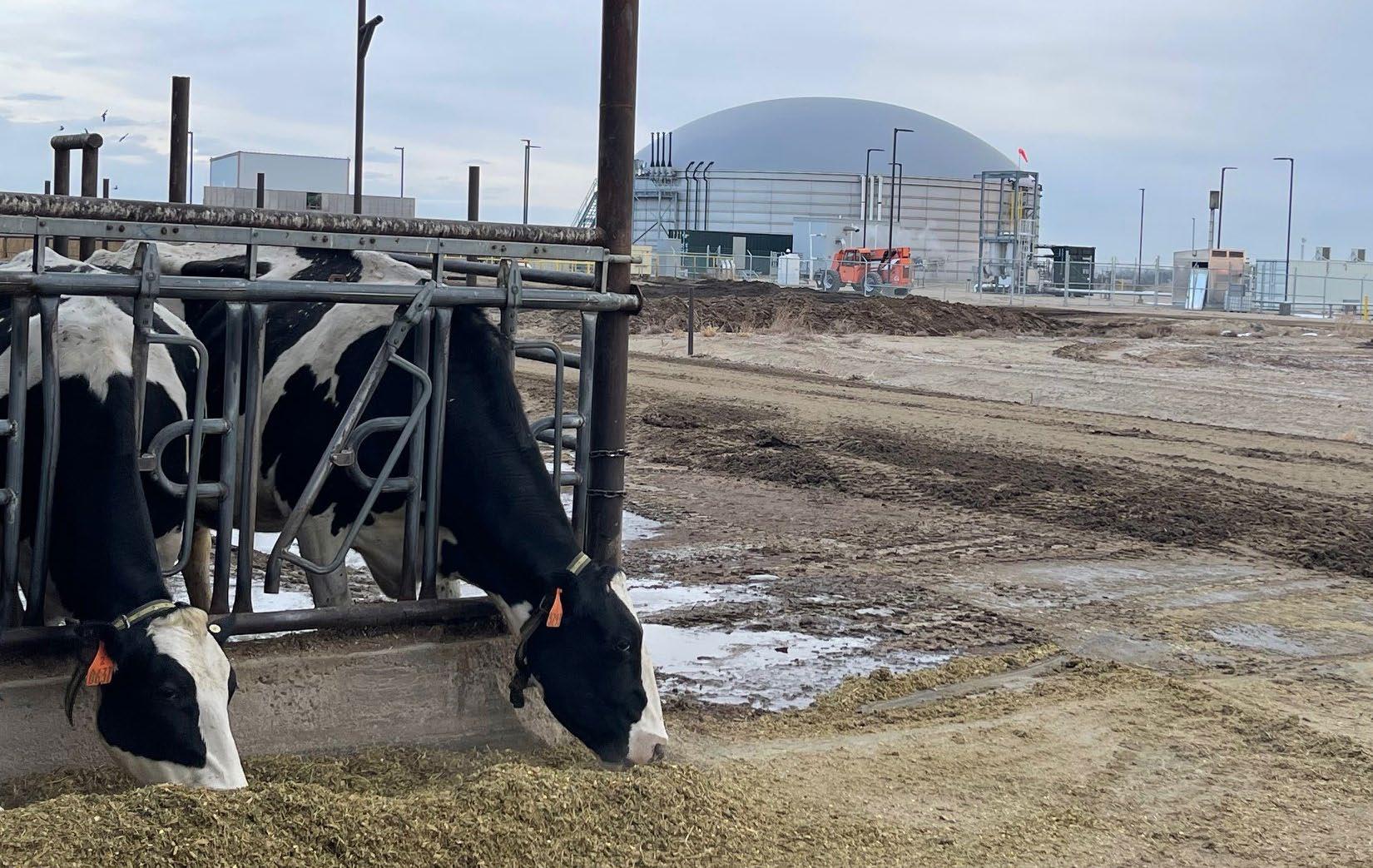
Darlene Steward, an environmental and energy systems researcher at the National Renewable Energy Laboratory in Golden, said farmers considering if a biogas digester would be a good fit should review the big picture of their farm operations — everything from use of manure to type of animal bedding.
“You really have to take a holistic view of your entire operations, and it is really helpful to work with an expert,” Steward said. “It can be helpful to work with a biodigester turnkey company to evaluate the economic viability for your particular farm.”
Colorado State University Professor Sybil Sharvelle in civil and environmental engineering echoed the importance of working with a technology provider with a proven track record of success in the same climate region.
Quail Ridge Dairy was well-suited for the addition of a digester because the liquid waste and manure were already managed through a solid separator, Kraft said. The solids were composted to produce fertilizer for hay fields and animal bedding. The liquids were stored in a lagoon for later use as fertilizer. With the new anaerobic
digester, end products are still available, but the methane and much of the smell are removed, Kraft said.
Sharvelle said interest in biogas digesters in Colorado has increased during the past five years due to favorable sustainableenergy policies in states such as California. These policies have increased the financial value of renewable natural gas.
“The price point of RNG is high enough currently that there is motivation to generate and capture as much methane as possible,” Sharvelle said. “There is a tremendous opportunity out here for us to turn manure waste into a valuable product.”
Reputable digester companies take the financial risk and technical headaches out of the process for farmers, Sharvelle said.
The collaborative AgSTAR program, sponsored by the U.S. Department of Agriculture and the Environmental Protection Agency, provides a good resource to learn about best practices through the Anaerobic Digester Project Development Handbook online at EPA.gov/agstar/ agstar-project-development-handbook.
AgSTAR notes that manure from dairy and swine operations can be best suited for farm-based energy conversion because those manure management systems are often liquid or slurry with central collection. Successful biogas systems thrive on economies of scale and typically operate with at least 500 cows or 2,000 hogs.
In 2023, AgSTAR reported 343 operational manure-based anaerobic digestion systems across the U.S., including 290 for dairy cattle, 46 for hogs, and others for poultry and beef. And the most recent data shows 86 digesters were under construction, including multiple in Colorado.
“I’m excited to see this level of traction and adoption of the technology,” Sharvelle said, “because it takes a problem and turns it into a resource.”
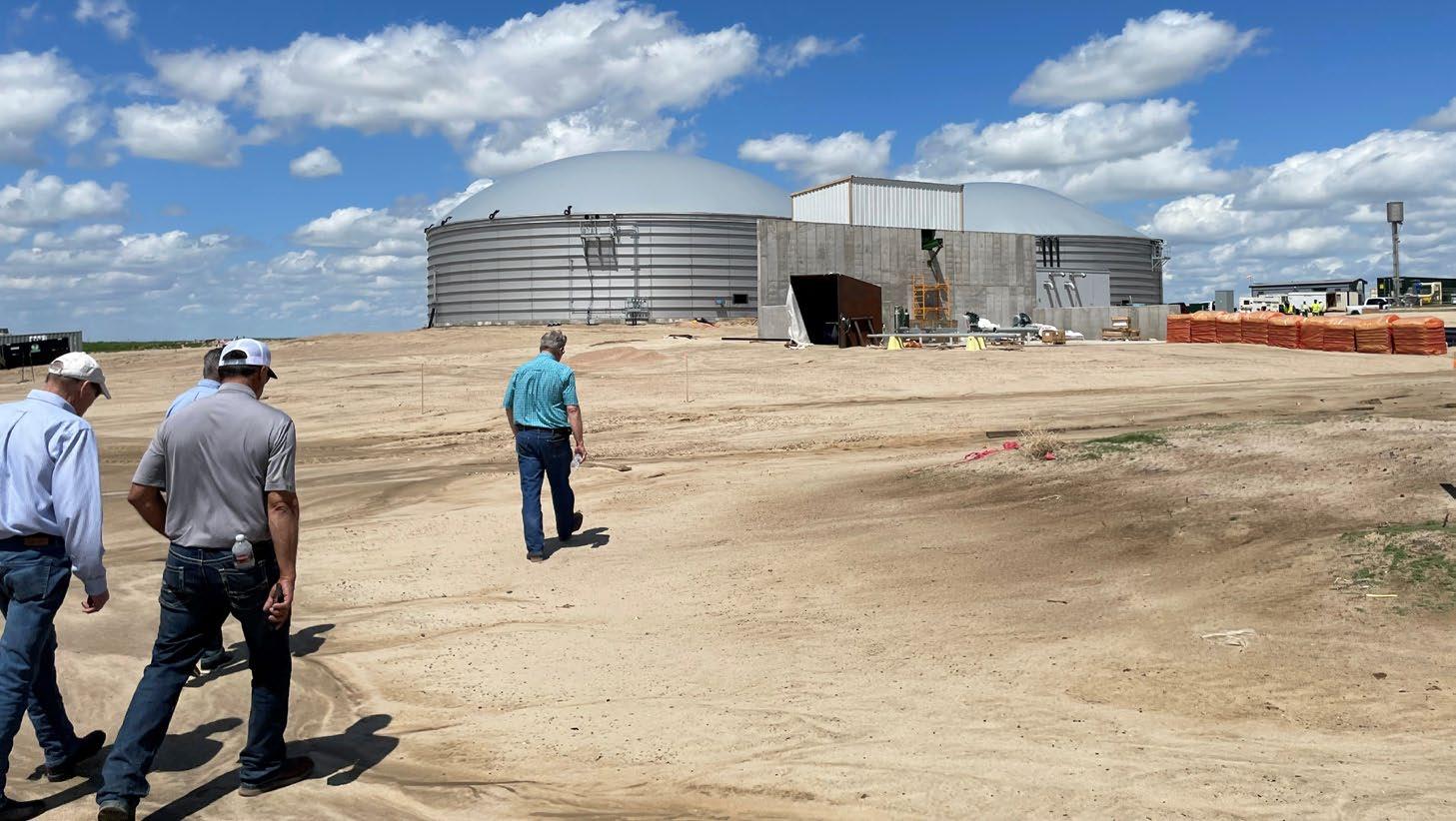 Suzie Romig is a degreed, award-winning journalist who lives near Steamboat Springs and has lived, worked, and explored in Colorado since 1990.
The new anaerobic digester at Six Arrows Dairy near Wiggins turns manure into energy. Photo by Val Loose.
Suzie Romig is a degreed, award-winning journalist who lives near Steamboat Springs and has lived, worked, and explored in Colorado since 1990.
The new anaerobic digester at Six Arrows Dairy near Wiggins turns manure into energy. Photo by Val Loose.

One day you are admiring beautiful roses, only to find jagged petals and bare leaves the next day. How could this happen? Look closely to see if your roses are covered with the iridescent emerald of Japanese beetles. It’s a sight we all dread.
Is it possible to win the battle against Japanese beetles? The best strategy is to learn about their life cycle, most of which takes place underground in the larval stage. These C-shaped, white grubs begin to surface in early spring and feed on plant roots along the way. In late spring, they form pupae, which hatch a few weeks later into adult beetles. Adults rise to the surface, feast on foliage, and release pheromones to attract other beetles. After mating, females burrow 2–4 inches back into the soil, lay a few eggs, then return to the surface to eat and mate again. Eggs hatch after eight to 14 days, and grubs feed on plant roots again. During one season, females lay 40 to 60 eggs. This damaging cycle continues until autumn when temperatures drop and grubs burrow 6–18 inches into the soil where they remain inactive all winter.
Timing is essential for stopping this cycle. The most effective time to treat grubs is when they are near the soil surface. Consult with your extension office for recommendations. They may suggest biological controls such as soil-dwelling nematodes, like Heterorhabditis bacteriophora, which are commercially available. They may recommend mixing milky spore bacteria with water to spray on turf. They may suggest dusting with Sevin (which contains carbaryl) or treating with chemicals such as imidacloprid or halofenozide. There are various opinions as to the effectiveness of each approach.
If you miss the chance to control Japanese beetles in the grub stage, chances are your plants will become infested with adult beetles. Some people recommend applying pyrethrin spray or Neem oil to vegetables and flowers when the beetles first appear. Others have tried Japanese beetle traps, but traps contain pheromones and floral scents that could have the negative effect of attracting even more Japanese beetles.
Most gardeners who’ve experienced Japanese beetles are familiar with the daily ritual of picking or shaking them off plants early in the morning when they are less active. (Later in the day, the beetles fly away too quickly to catch). After capturing beetles in your hand, drown them in a jar of soapy water, closing the lid before they can escape.
After a summer of catching and destroying Japanese beetles, you may agree it would be easier to attack grubs in the soil. Or you may choose another option — avoid plants they like (e.g., roses, dahlias, zinnias) and grow flowers they dislike (e.g. coral bells, delphiniums, impatiens, and nasturtiums).
Master gardener Vicki Spencer has an eclectic background in conservation, water, natural resources, and more.
Read previous gardening columns at www.coloradocountrylife.coop. Click on Gardening under Living in Colorado.
As the weather begins to warm and days get longer, it’s important to begin preparing your yard for a healthy growing season. While factors including climate, soil type, and grass type can all impact how your yard grows, there are a few steps you can take during the spring months to help your lawn thrive.
Simple chores such as dethatching, aerating, fertilizing, and mowing can help ensure your yard looks its best and is prepared to fight off seasonal weeds, disease, and drought.
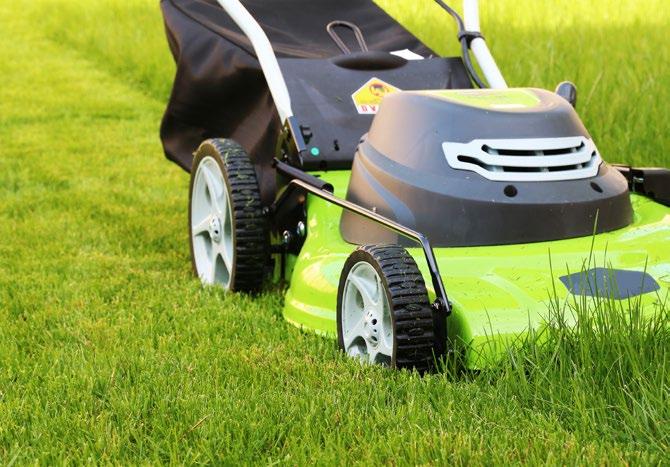
LOOSEN THE THATCH LAYER
Before it’s time for the first mowing of the season, inspect your mower and perform any routine maintenance necessary. That goes beyond sharpening or replacing the blade. If you have a gas-powered mower, it also includes changing the oil, spark plugs, and filter as well as filling it with a fresh tank of gas.
It is important to avoid working on your lawn until after the final freeze to avoid damaging the grass. When the threat of freeze is gone, rake your yard with a spring tine rake to loosen thatch — the layer of leaves, roots, and dead grass that builds up between live grass and soil. Do this before the first mow. Be sure to rake when the soil is dry; if it’s too soft or muddy, you may pull up healthy grass crowns.
COMBAT COMPACTED SOIL
If your soil has become compacted — likely the effect of heavy foot traffic — and is too dense for water, air, and other nutrients to reach the roots of your grass, aerating can help break it up and reduce thatch. A core or plug aerator can introduce tiny holes into your soil by removing plugs of grass and soil, which lets nutrients more easily reach the roots. A bonus to aerating: The plugs can decompose on top of your grass, supplying more nutrients.
START SEASONAL MOWING
When the ground is dry enough and your grass is long enough to require cutting, begin seasonal mowing. Be sure to use proper techniques, including varying your mowing direction each time to avoid creating patterns or ruts, and avoid cutting grass too low, which can make the lawn more susceptible to weeds and drought stress. In general, never remove more than one-third of the grass blade at a time.
Find more tips to help get your yard ready for warm weather at www.eLivingtoday.com.










You don’t have to hike often to know that trail quality and conditions can make or break a day of hiking in the mountains or foothills of Colorado. If you enjoy being in nature and you love making a difference, then volunteer opportunities to help maintain trails are a perfect fit for your summer plans. Four organizations within the state are dedicated to maintaining Colorado’s thousands of miles of hiking trails for generations of hikers and wilderness lovers to come.
Colorado is endowed with 58 mountains whose peaks rise at least 14,000 feet above sea level — more than any other state in North America. Because of this lofty distinction, many adventure seekers have been challenging themselves to climb these behemoths for decades. The heavy foot traffic on these high-altitude trails can be hard on the ecosystems, causing more damage than wind and rain.
Climbing these giant fourteeners is a signature Colorado achievement that everyone wants to ensure remains intact for future generations. The Colorado Fourteeners Initiative is a nonprofit, volunteer-dependent organization that helps restore and maintain the trails and fragile plant life. Volunteer opportunities range from three-day trail builds while camping near the work site — sometimes near the summit — to wildflower-seed collection, where the seeds from native flowers will be used to repopulate barren trails.
The Colorado Trail stretches 500 miles from Denver to Durango. One of the nation’s premier long-distance trails, it’s a pathway for hikers who want to travel the majority of the state on foot, passing over mountains, around lakes, and through a number of Colorado communities.
The Colorado Trail Foundation is the caretaker of this challenging hike and volunteers work on maintaining its varied terrain. Each year, the foundation’s roughly 20 volunteer crews make improvements to the trail. These excursions require good physical stamina and backcountry-camping experience, but the rewards are days spent in some of North America’s most pristine wilderness.
The Continental Divide Trail follows the United States’ claim to the Continental Divide from Montana to New Mexico, running through Idaho, Wyoming, and Colorado. In all, more than 3,000 miles of hiking trails constitute this grand route.
As with the other trail-stewardship programs, no previous experience is required to help with the Continental Divide Trail Coalition. Projects with the organization range from repairing damaged sections to scouting missing trail links to building unfinished sections. You can also pick up a shovel to join the trail crew, become a team leader, cook for trail crews, adopt a section of the trail or even volunteer in the alliance’s Golden office.
Volunteers for Outdoor Colorado is a nonprofit organization dedicated to engaging the public to care for Colorado’s outdoors and natural resources through volunteerism. VOC hosts a variety of statewide programs that help revitalize areas such as federal and state parks, open spaces, wilderness and backcountry areas, mountains and fourteeners, wetlands, wildlife habitats, and other lands that benefit the public.
From one-day excursions to restore or construct Colorado’s trails and habitats to multiday stewardship adventures, VOC’s volunteer program engages thousands of volunteers each year. Examples of projects include expanding the bison-viewing area at Genesee National Park and trail construction at Sloan’s Lake in Edgewater. The organization also offers family-friendly volunteer opportunities to encourage youth involvement in preserving the future of Colorado’s natural habitats and outdoor leadership-training programs.
Contact these nonprofits to find out what trail maintenance activities are available this summer — some may even be in your own backyard!
MISSED AN ISSUE?
Catch up at coloradocountrylife.coop.
Click on Outdoors.
a car,

cpw.info/KeepColoradoWildPass
cpw.info/KeepColoradoWildPassSpanish



Dare To
Sing when the world is sorry play when the worries crowd in jump when the rewards are over our heads clap when our efforts keep coming hoot when the naysayers yell the loudest dance even when the music stops breathe when the air grows thin speak your mind when your thought is needed live while the chance continues and never forget the wonder and joy even the pain from all those years that made us who we are.
CarolH. Ehrlich, Grand Lake Mountain Parks Electric member
Clearly the trees grew here first, reflections of sunlight like votive candles, burning in a synthesized fashion, growing taller instead of melting, cooling into groves of scented shade until light dims and dark invades. Today along these narrow dirt roads I hiked for miles through a maze of Ponderosa pines, as if loosed into a needled cathedral, spires broadcasting birdsong the whole way back to where my trail started. What I also saw were trees banded by rings of orange paint like the flare of matches once struck, still smoldering with a harvester’s intent. Oh holy day, when the loggers stay silent and the trees sway.
David Feela, Cortez Empire Electric Association memberAs I sit in the Rye Park, I can hear the rushing water rushing in the creek nearby. The mountain runoff is filling the creeks with a loud roar of water.
I’m looking forward to a summer without drought, no forest fires, or fire bans. Is there any sweeter sound then the sound of rushing water?
I miss my days at Camp Jackson and falling asleep to the sound of rushing water as I slept with my cabin windows open. Makes me wish I could fall asleep to the sound of rushing water each night.
Amy Manning, Colorado City San Isabel Electric member
What is so pleasant as a path in the woods
That winds and meanders through the trees?
A track across an open field is straight;
The woodland trail is gently curved.
It keeps us from the tangled thorns
That try to trap us with their hooks, Pulling us in with no escape
From the dense underbrush beneath the trees.
Nor do we have to creep and crawl
Over the deadfall limbs and branches
That wait within the woods itself
To trip us up, stumbling to our knees.
A woodland trail holds mystery; We cannot see beyond the bend.
Sometimes it tunnels to a vanishing point With solemn branches arching overhead. Here there awaits no enmity; Anxiety recedes along this trail, But best of all it harbors hope, An Eden promise that we will emerge.
Glenda VandenBosch, Lake City Gunnison County Electric member
The days pass so quickly now and time just seems to fly it’s as though you are in a hurry to meet the day you die now thoughts like this would never be when I was young and “fancy free” but as I’ve aged I know too well how long you live only time will tell
William Lee, Clifton Grand Valley Power member
Oh dusty road, oh timeless friend, quiet repose til labor’s end; then sounds your country lullaby, ’gainst rolling hill and western sky.
’Midst antelope and golden plain, your soft melodious refrain; as tires bounce and gravel flies, beneath these Colorado skies.
’Tis traveled well, your barren span, by neighbor and by highwayman; and each dawn I depart and then, at dusk you lead me home again. To running feet and open arms, to laughter sweet and precious smile; so take me home, oh dusty friend; take me another final mile.
Daniel Dean Swanson, Calhan Mountain View Electric Association member
Botanicals in the forest twinkling from their posts
Welcoming me with their enchanted dance and competing for my loving glance
Never a care in the world but there to “Just Be” and sunny
Unruffled moments — savoring their friendship in a day of so many
The delicate breeze of lavender soothes and quietly speaks my name
Everything will be all right she says - however unsure of how this can be attained
My sunrise cup is cold and nearly hollow — should I retreat to have another?
Internal heart says to wait until dawn — for then my cherished foliage will invite me to stroll with them tomorrow
Anne-Marie Scro, Black Forest Mountain View Electric Association member
New soft gel sweeping across America holds the key to waking up feeling refreshed, enjoying joints that move freely…now with ‘better absorption’ lipid technology.
In early 2024, Al Sears M.D. is re-launching his unique version of keto-friendly CBD nationwide.
After teaming up with medical researchers at The Green Gardener to create the world’s best, most absorbable, most effective CBD product, their latest innovation is nally ready to ship.
This new product boasts higher absorption than the competition and has passed rigorous quality testing and scienti c study.
“In the short amount of time CBD has been available, we’ve seen just how transformative it can be for all people.” says Dr. Al Sears, “[CBD]… promotes a feeling of comfort and a peaceful, relaxed state of mind better than most commercial alternatives and isn’t addictive in any way.”
Many vendors have tried to jump on the CBD bandwagon, ooding the market with cheap, low-quality products. But research has revealed what makes CBD work better than the alternatives – and that is how Dr. Sears’ latest innovation Canna LS stands out.
The problem with cannabinoids is that they are oil-based compounds meaning they do not mix well with water.
And since our cells are 90% water the cannabinoids can’t ef ciently penetrate the cell membrane and get inside the cell where they are used . Because our bodies can’t absorb CBD on its own very well, it’s much more dif cult to feel the bene cial effects.
“The Green Gardener’s Canna LS stands out from the crowd by being available in highly absorbable, lipid soluble soft gels.
With its lipid soluble design, Canna LS gets to work more quickly and effectively than CBD found at general retailers and gas stations.
Thanks to this unique lipid soluble
technology, users can now enjoy more support for discomfort…and many other bene ts that CBD has to offer without having to wait hours for it to kick in.
100% Keto CBD
Studies done in animals and in human cells have suggested that when CBD is administered with a high fat meal or in a lipid-based formulation its bioavailability is signi cantly improved, as much as three-fold .
And that’s good news for those taking Canna LS since this formulation is keto-friendly, with expected optimal results for those consuming fat for energy.
Dr. Sears and Green Gardener sourced a pure and high-quality fat source in the form of MCT oil within the Canna LS soft gel. Now everyone can have keto-style CBD that truly delivers.
MCT oil is a new natural wonder shown to support a healthy weight, boost stamina, and help sharpen focus.
• Lipid Soluble Technologyone proven to make hemp way more absorbable in the cells than oil alone
• The Entourage Effect –contains the full-spectrum of therapeutic phytocannabinoids and terpenes
• A Therapeutic Cannabinoid Dose -10 mg of the most powerful cannabinoids without THC.
• Highest, Pure Grade Hemp
– Made in America, all-organic, non-GMO, and free of pesticides and toxins

“By the sixth day, the occasional discomfort I had was gone.”
- Daniel M
In all 50 states, patients can get their hands on a non-psychoactive form of cannabis or CBD almost anywhere. But not every option is going to deliver.
Not only is Canna LS the best source of all natural, non-GMO cannabinoids, but it is also formulated with a game changing delivery system that allows it to deliver those cannabinoids where they are used most.
“We can only make this guarantee because we are 100% certain our customers will be satis ed,” says Ms. Kim. We want to take full risk off consumers. So in addition to offering substantial dis-counts for rst-time customers, we also make them a huge promise that ensures they don’t have to risk a cent.”
Here’s how it works: Take Canna LS exactly as directed, and you must be thrilled with the results! Otherwise, sim-ply return the bottles and any unused portion with-in 90 days of purchase.
A large percentage of men and women using Canna LS experience truly amazing results.That’s why it’s now being sold with a guarantee that goes way beyond the industry standard.
“We can only make this guarantee because we are 100% certain our customers will be satis ed,” says Cody Gillespie, the executive who helped Dr. Sears create this new healthy hemp breakthrough.
“So, in addition to offering substantial discounts for rst-time customers, we also make them a huge promise that ensures they don’t have to risk a cent.”
Here’s how it works: Take Canna LS exactly as directed, and you must be thrilled with the results! Otherwise, simply return the bottles and any unused portion with-in 90 days of purchase.

Dr. Sears is also the visionary behind a new sleep champion that your exhausted brain and body have been waiting for. His research led to the development of a revolutionary sleep formula known as CBDreams, which helps support sound sleep and relaxation.
In a user study performed at the Sears Institute for Anti-Aging Medicine, over 80 percent of participants fell asleep quickly and woke feeling refreshed after taking CBDreams
This new sleep innovation supports waking up the next day feeling refreshed and not the least bit drowsy because it helps maintain natural circadian rhythms — waking up when the sun rises and falling asleep when it sets.
To help everyone enjoy this natural balance and revitalized energy levels, every order of Canna LS will ship with one free CBD Dreams-a full 30-day supply of sleep wafers will be included while supplies last.
Dr. Sears feels so strongly about Canna LS, all orders are backed by a 100% money back guarantee. “Just send me back the bottle and any unused product within 90 days from purchase date, and I’ll send you all your money back.”
Call the Canna LS Hotline NOW to take advantage of this exclusive offer and use Promo Code: COCA524 when you call. Remember each order of Canna LS ships with one free 30 day supply of CBDreams
Special Introductory Offer – Only While Supplies Last! Get Free Shipping When You Order The Best Deal Call the Canna LS Hotline Now. 1-855-220-5852 And Mention Promo Code COCA524 When You Call


MARCH BOOK GIVEAWAY:
Emily Kampf, a Grand Valley Power member won False Summit; Mountain View Electric member Martha Aschenbrenner won The Patron Saints of Grocery; and Marvin Young, a Mountain View Electric member won The Powell Expeditions.
APRIL PETS PIZZAZZ WINNERS:
Linda Springer, a Southeast Colorado Power Association member won the snufflemat, and Sangre de Cristo Electric Association member Sandra Biggs won the catnip twists.
September marks National Service Dog Month — a month-long recognition to honor the dogs that have a career helping humans. CCL wants to show appreciation to our fourlegged friends who play a big role in the lives of Coloradans.
Join us in celebrating the extraordinary bond between you and your service dog. We invite you to participate in an upcoming story for CCL by sharing your unique stories of the loyal service dog in your life. Tell us how your four-legged hero plays a pivotal role in your life and provides support, love, and assistance.
Do you have a touching tale of how your service dog has helped you overcome challenges? We want to hear from you. Share your stories for a chance for it to be published in the September 2024 issue of Colorado Country Life.
Let's shine a spotlight on the remarkable service dogs across Colorado and the impact they have on your life.












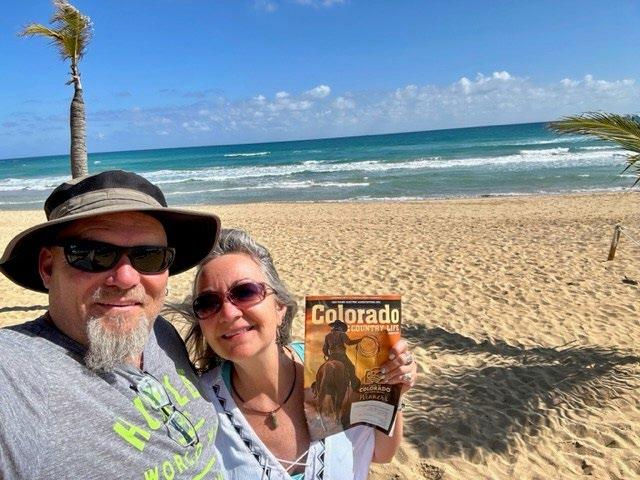
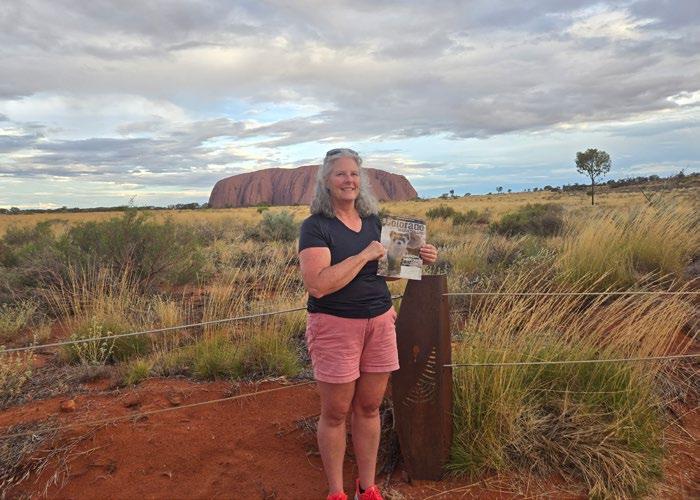
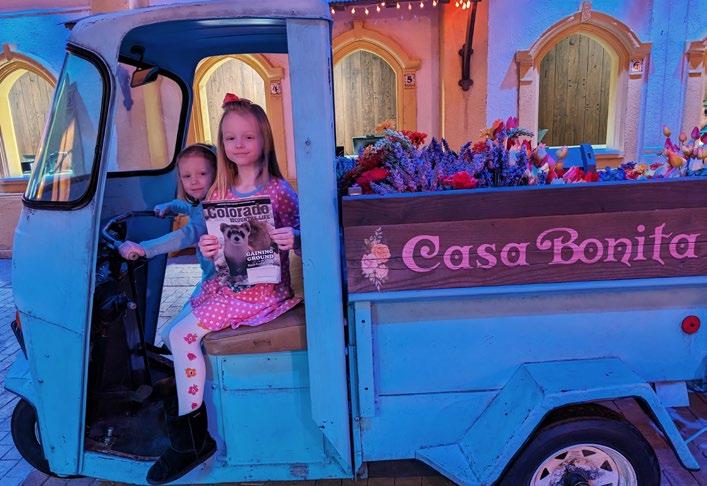

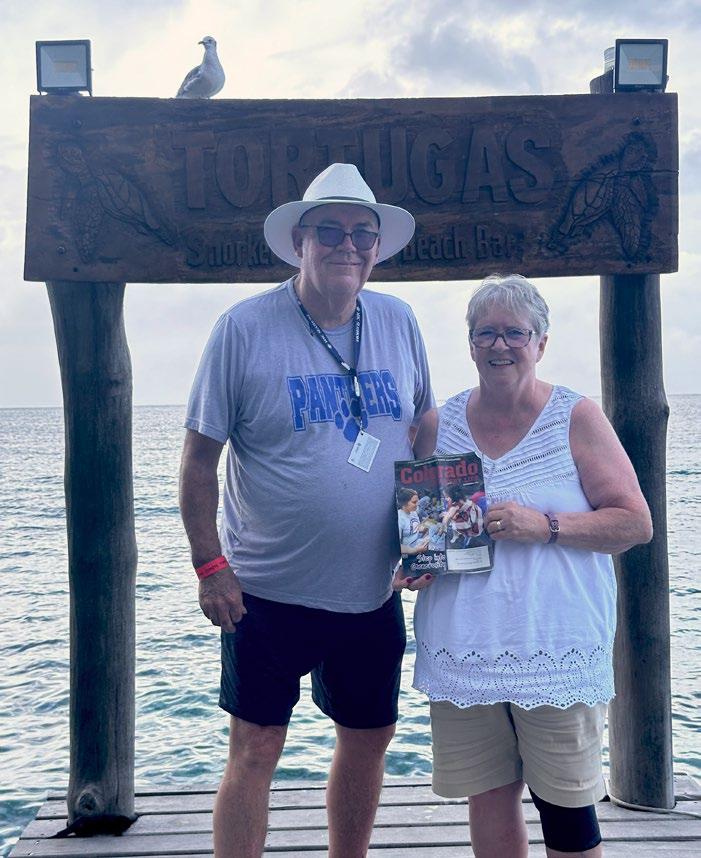
Don’t forget to pack your copy of CCL for your next trip!
Show us where you enjoy CCL for a chance to win! Simply take a photo of someone (or a selfie!) with the magazine and share it with us on the Reader Engagement page at www.coloradocountrylife.coop. Each month we’ll draw one photo to win $25. The next deadline is Thursday, May 16

Some years ago, we went on a family camping/boating trip. Arriving after dark in a blinding rainstorm, we located our son and wife in a drowned-out campsite. Relocating to a paved boat ramp parking lot, we set about stretching a tarp between our pop-up camper and the pontoon boat while feverishly trying to dry out and warm up our drowned rats. I glanced down at my 5-year-old grandson Steven wearing rain gear and sitting in his junior-sized lawn chair under the tarp. He looked up and, as serious as could be, uttered, “This camping sure is fun isn’t it, Grandpa.” We still laugh every time we remember.
Steve Cleveland, Pueblo West San Isabel Electric member
Recently our 10-year-old granddaughter, Dakotah, returned from a routine checkup.
Grandma asked, “What did the doctor say?” “I didn’t go to the doctor,” Dakotah said. “I went to the dentist.”
“Oh, well, what did the dentist say?” Grandma replied.
Dakotah exclaimed, “I’m getting new glasses!”
C. Grandbush, Walsenburg San Isabel Electric member
We pay $15 to each person who submits a funny story that is printed in the magazine. At the end of the year, we draw one name from the published stories, and that person will receive $200. Send your stories to Colorado Country Life, 5400 Washington Street, Denver, CO 80216, or email funnystories@ coloradocountrylife.org. Remember to include your mailing address, so we can send you a check!
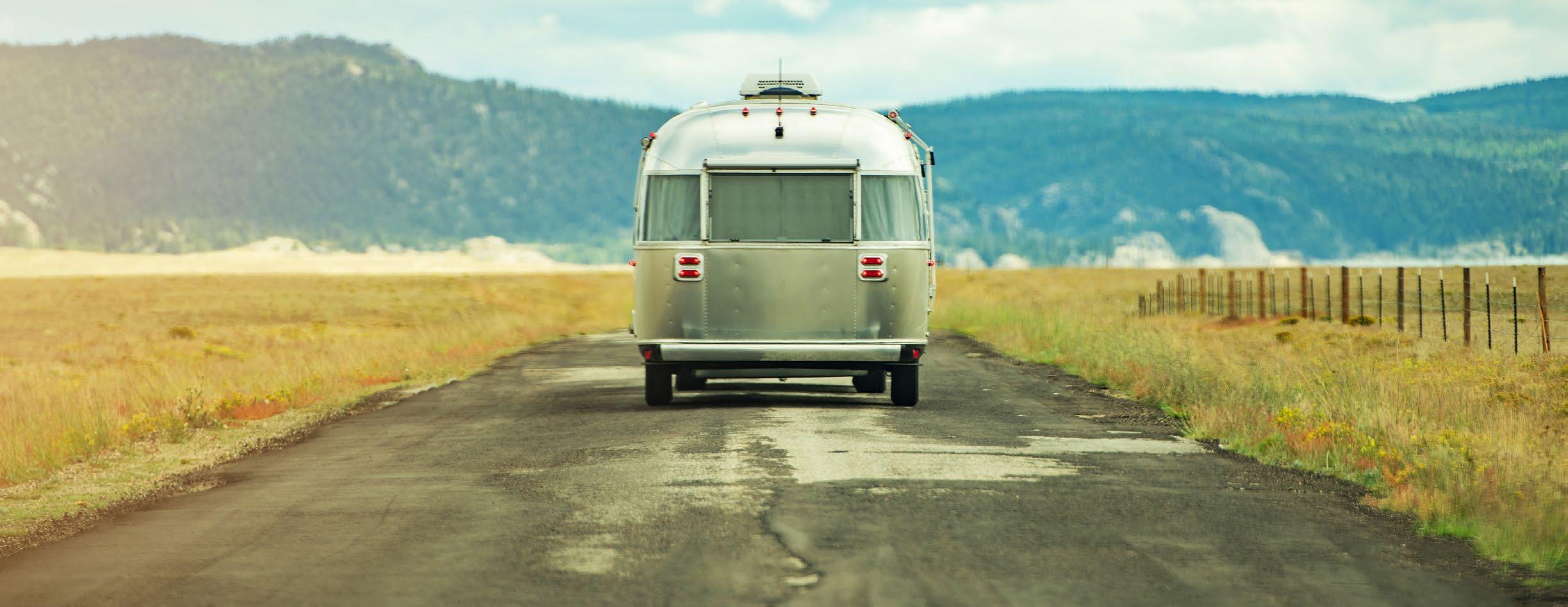

This summer visit Montrose-based The Star Drive-In and help celebrate their 75th year of continuous family ownership. The single-screen venue showcases double features of classic familyfriendly films all summer long. Visitors can expect longer wait times on weekends, and the cash-only box office opens 45 minutes before dusk. Take the time to enjoy this timeless setting that creates an experience your family will love. Visit www.stardrivein.com for a list of upcoming features, pricing, and more information.
Roller skating — a popular sport of decades past — can still be enjoyed today. Morgan County-based The Brush Roller Rink/Ortiz Event Center makes this nostalgic sport an accessible activity for families and adults who want to get their skating groove on. A perfect site for parties, your guests can grab a bite to eat and skate the night away under a disco ball. To learn more, visit Brush Roller Rink/Ortiz Event Center on Facebook or call 970-842-7708.

Inspired by the 1950s-style candy counter, visitors can find more than 600 nostalgic candies at The Old Fashion Candy Store in Estes Park. From popular assortments to hard-to-find sweets, if you crave it, chances are this candy shop will have it. To learn more, visit TheOldFashionCandyStore on Facebook or stop in at the store located at 184 E. Elkhorn Ave. in Estes Park.
If candy isn’t your craving, perhaps ice cream will hit the spot. Tucked away in Meeker’s charming historic downtown, you’ll discover another beloved classic: a soda fountain. The Meeker Sweet Shop is known for their custom crafted milkshakes and hand-scooped ice cream. Featuring retro red and chrome swivel seats, vintage glass bowls, and a vibrant atmosphere, the Sweet Shop is a popular hangout for all generations. Whether you’re in need of a refreshing beverage or a double scoop to cap off a day of hiking or river adventures, this spot has you covered. The Sweet Shop is located at 316 6th Street in Meeker.



Craving a 1950s diner experience? I-70 Diner is a Flagler fixture and a stop to add to your travels across eastern Colorado. When you see the bubblegumpink classic Cadillac spinning atop a 25-foot pole, you’ll know you’re in the right spot. Guests can enjoy a wide variety of food: Mexican-inspired dishes, a traditional club sandwich, and biscuits and gravy. Complete with 50s diner kitsch, neon lights, and swivel chairs, the diner will satisfy your hankering for a nostalgic experience. The I-70 Diner is located at 17044 County Road 5 in Flagler. For hours and more information, call 719-765-4040.
Located in Cortez, just 9 miles from Mesa Verde National Park Visitors Center, The Retro Inn is a perfect blend of fun, charm, and beauty. Travel to the roaring 20s in the Great Gatsby Suite, featuring luxurious furnishings with a touch of Art Deco flare. Feeling the free spirit of the 60s? In the Woodstock Suite, visitors are treated to a water bed, shag carpeting, bold wall colors, and funky decor. Visit the clubhouse to play billiards, foosball, nostalgic board games, and retro video games. Outside, guests can enjoy a game of giant chess while grilling out on the lawn. To learn more and book a stay, visit www.retroinnmesaverde.com.
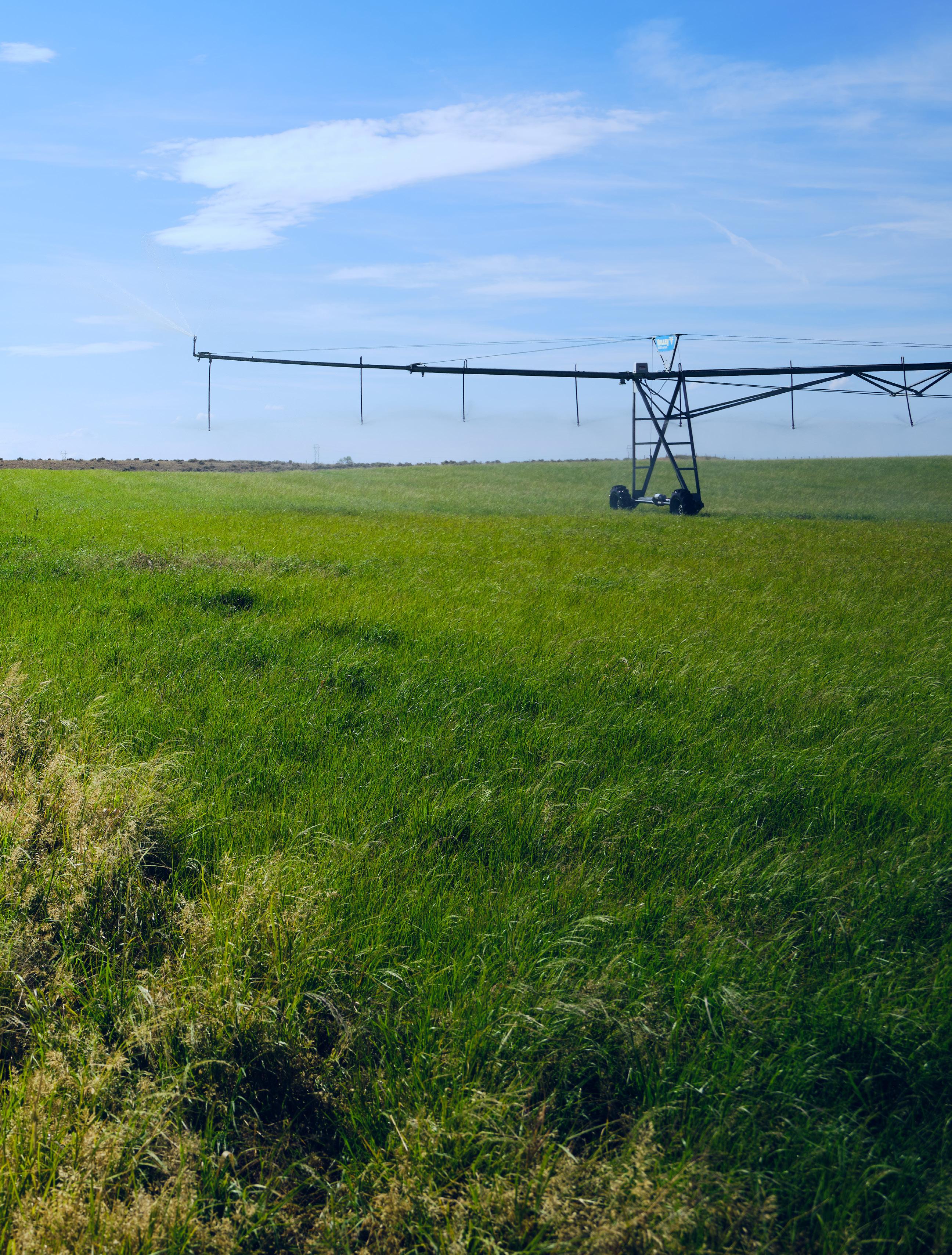
Energy efficiency holds immense opportunities for farming practices, from reducing environmental impact, water usage and energy consumption to enhancing precision agriculture and post-harvesting processes. Tri-State and our members are dedicated to supporting farmers and ranchers who are reshaping the future of agriculture towards increased productivity and sustainability.
Built by and for our members, we power what matters to you. That’s the value of our cooperative family. To learn how we’re delivering on our mission, visit www.tristate.coop



